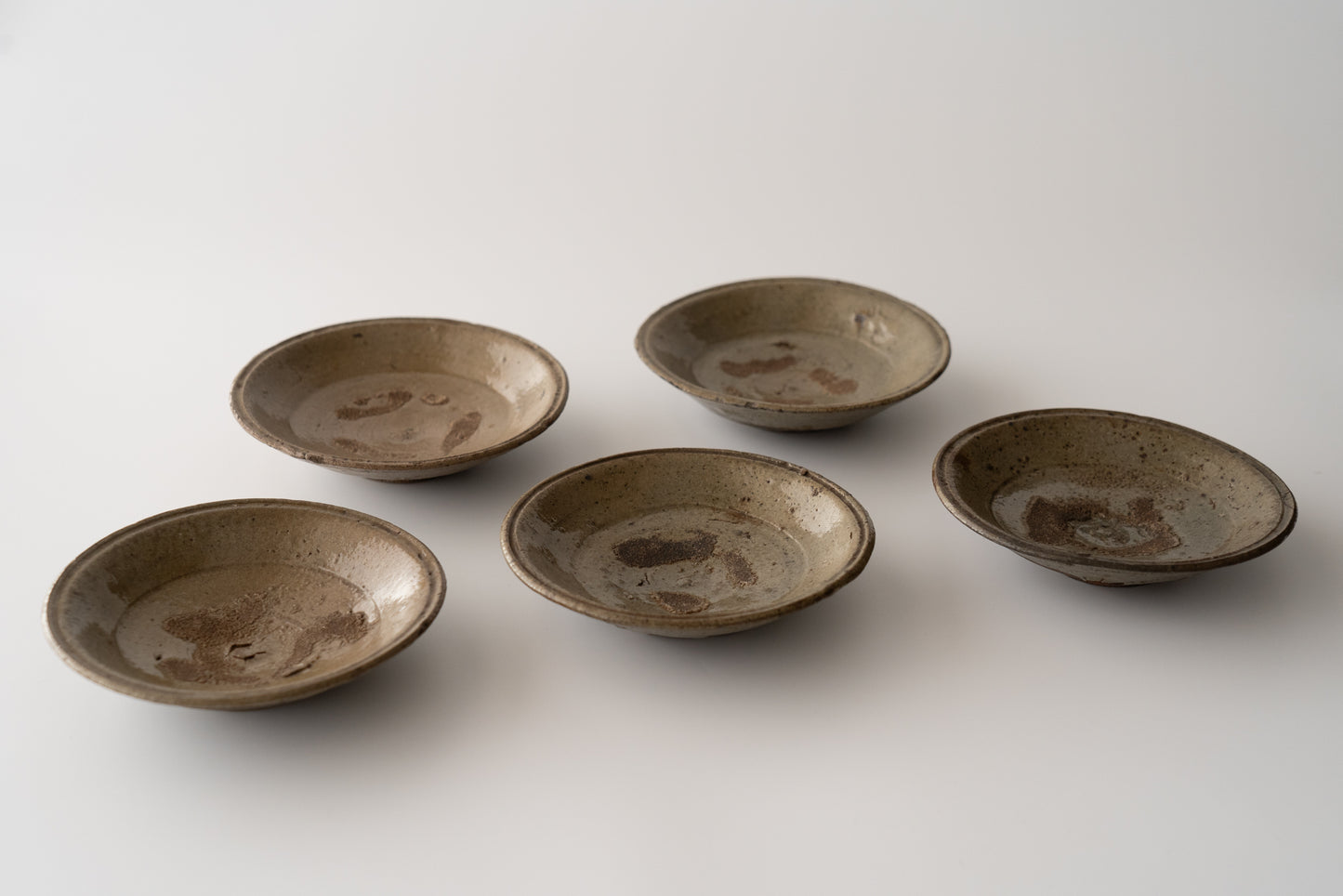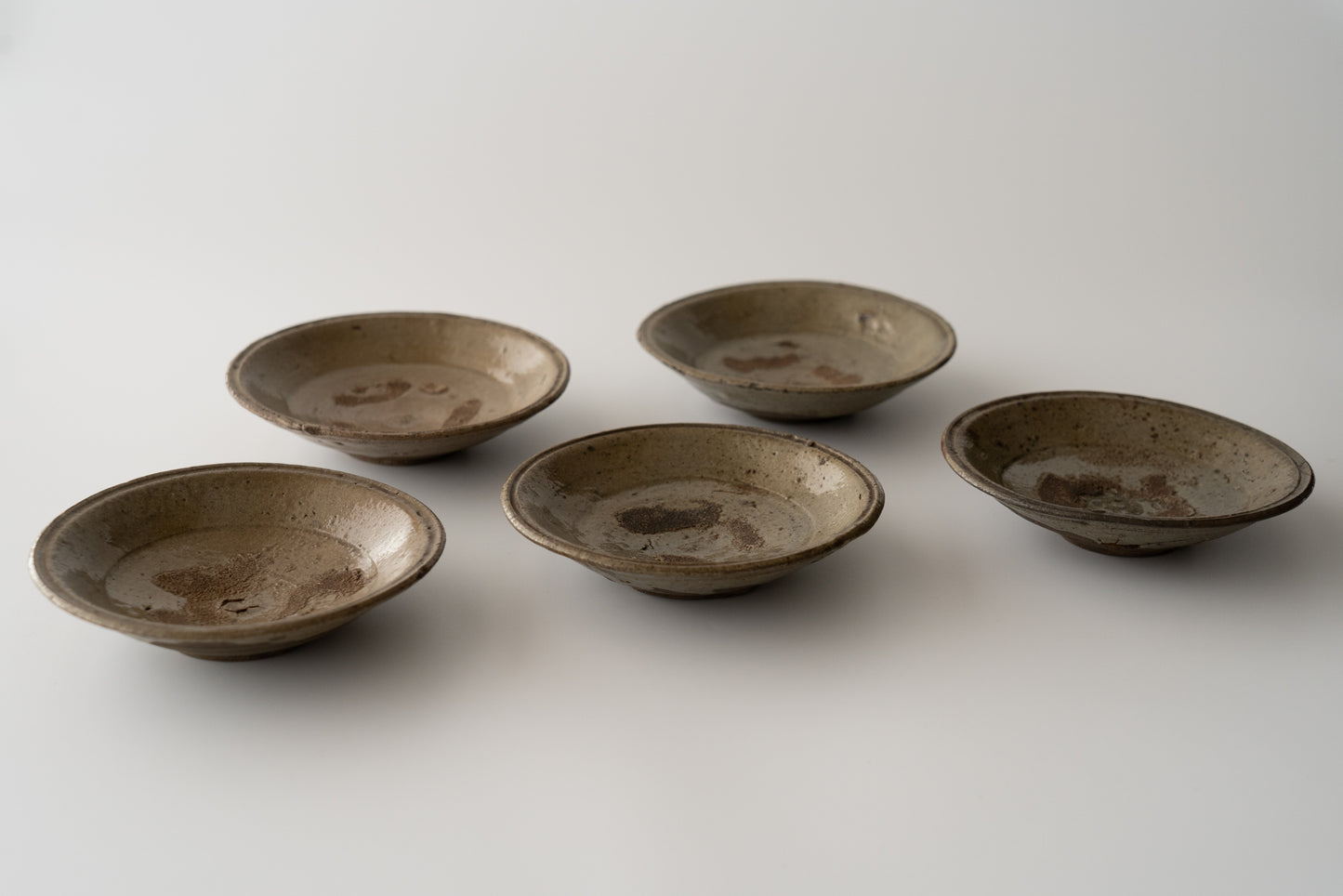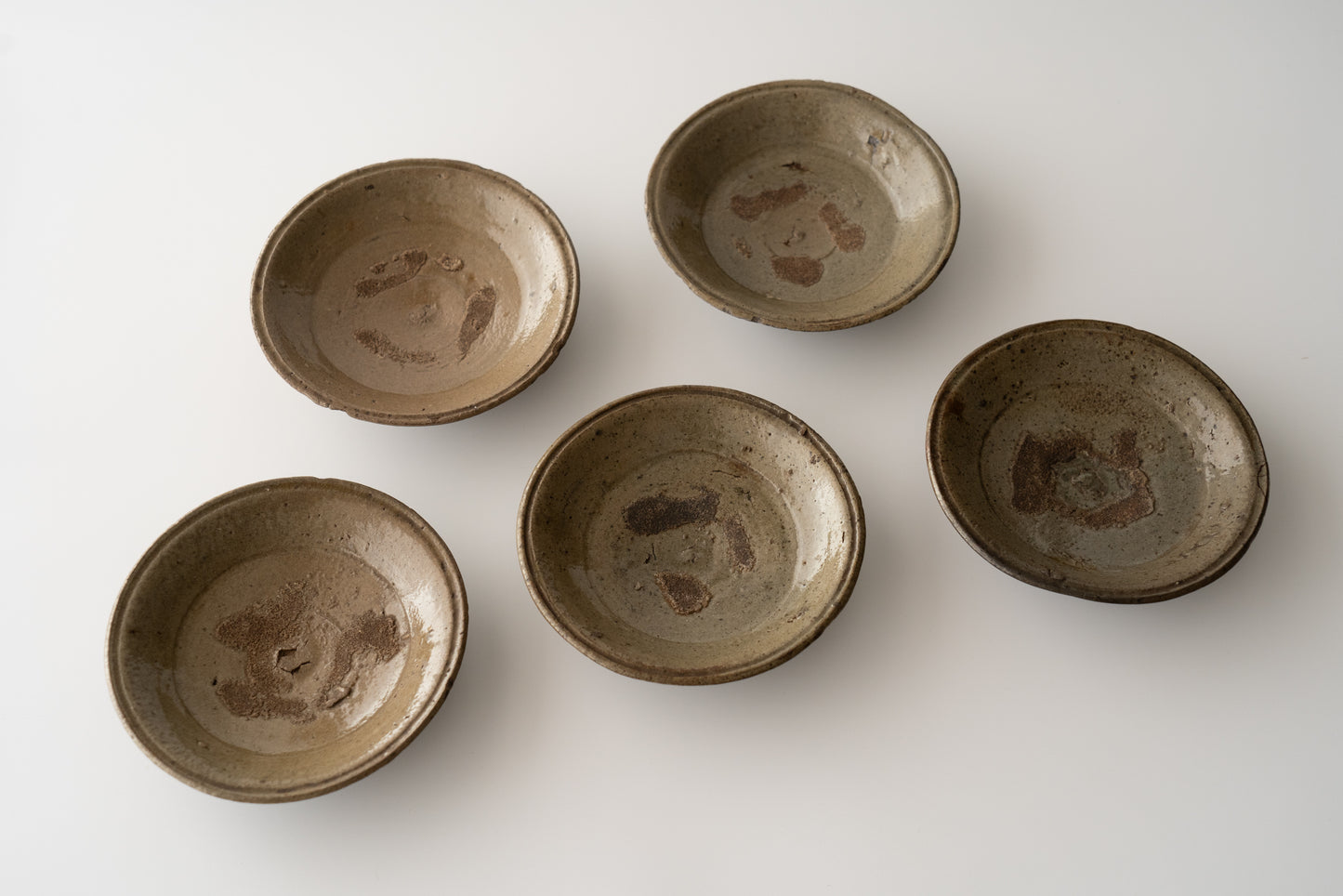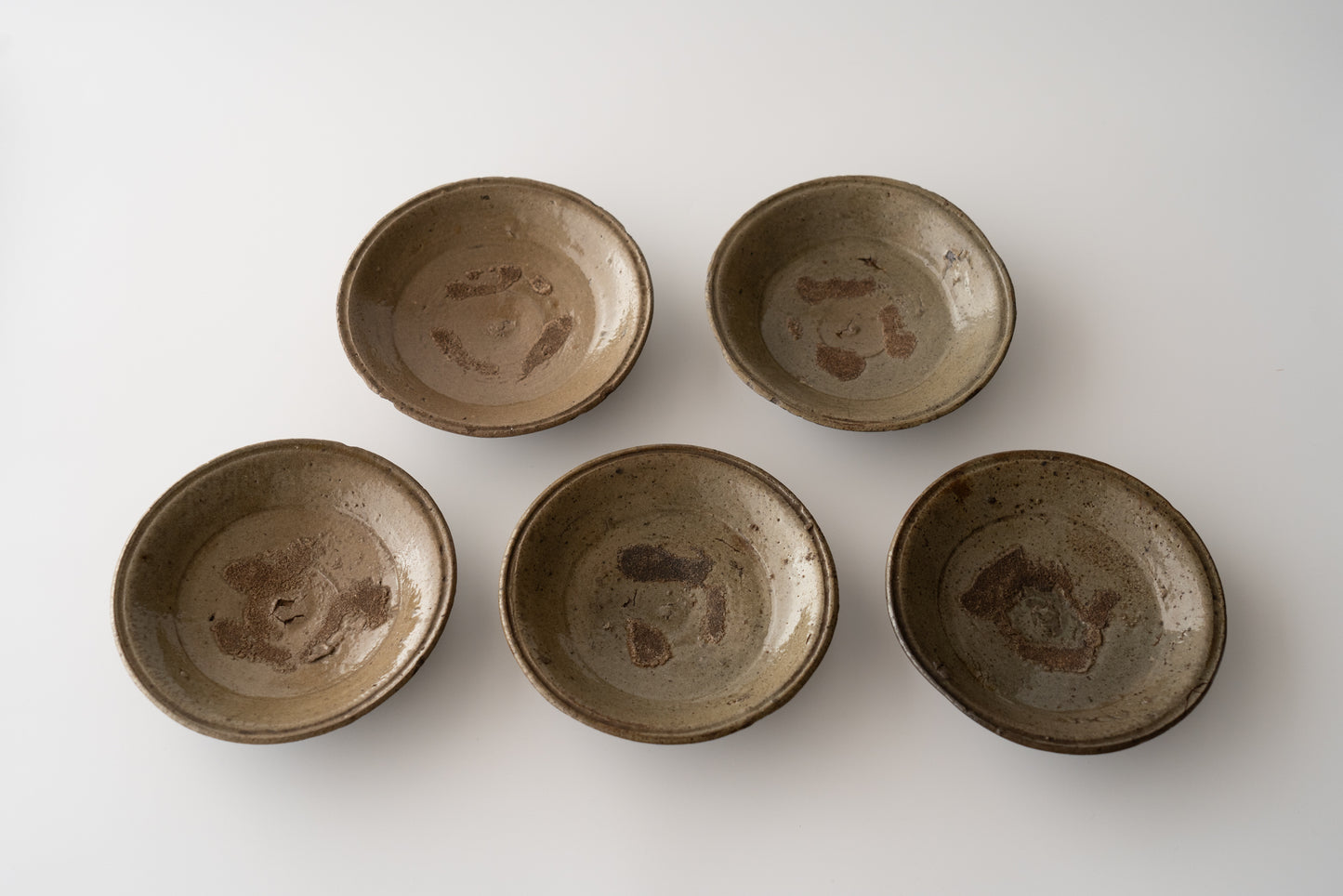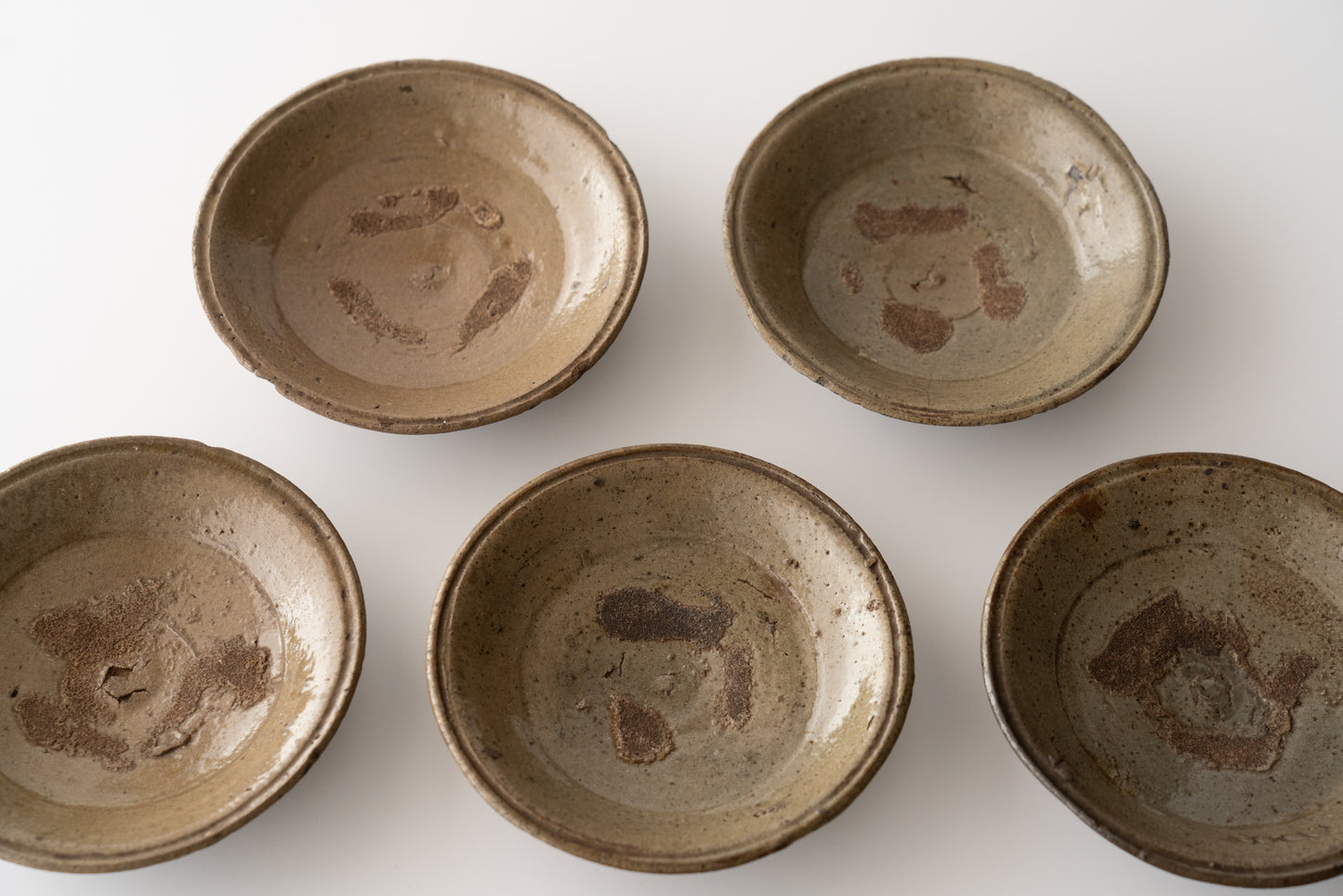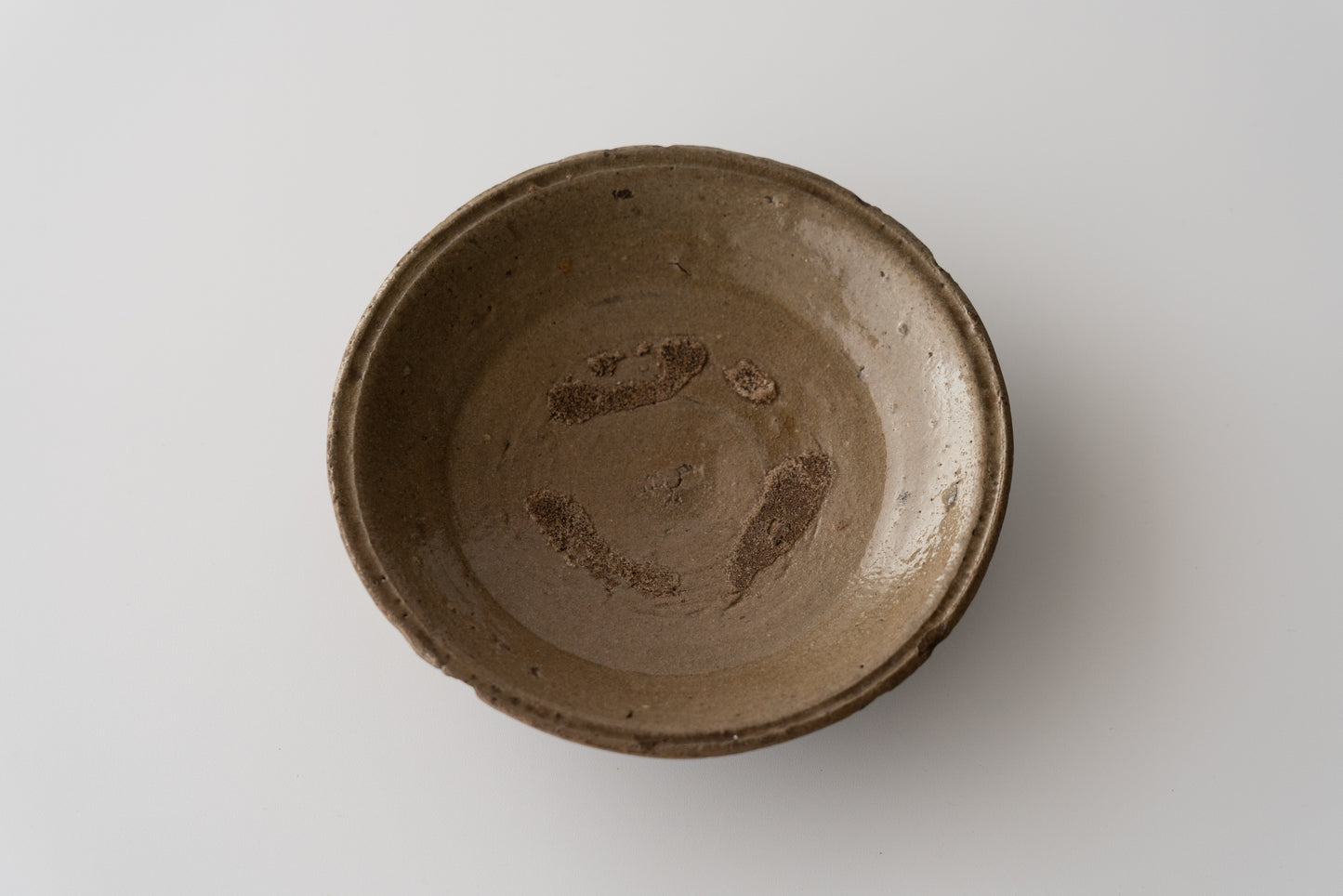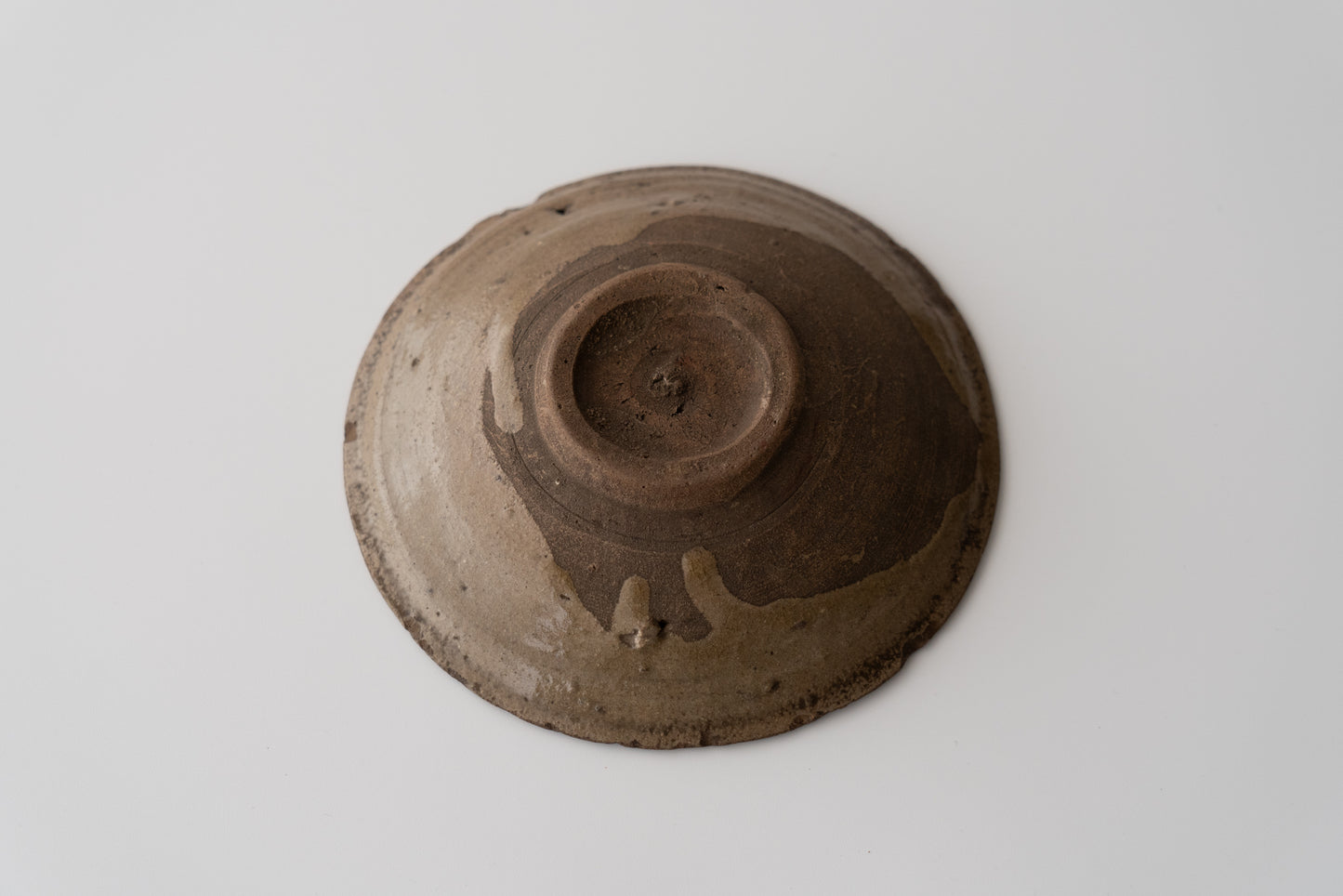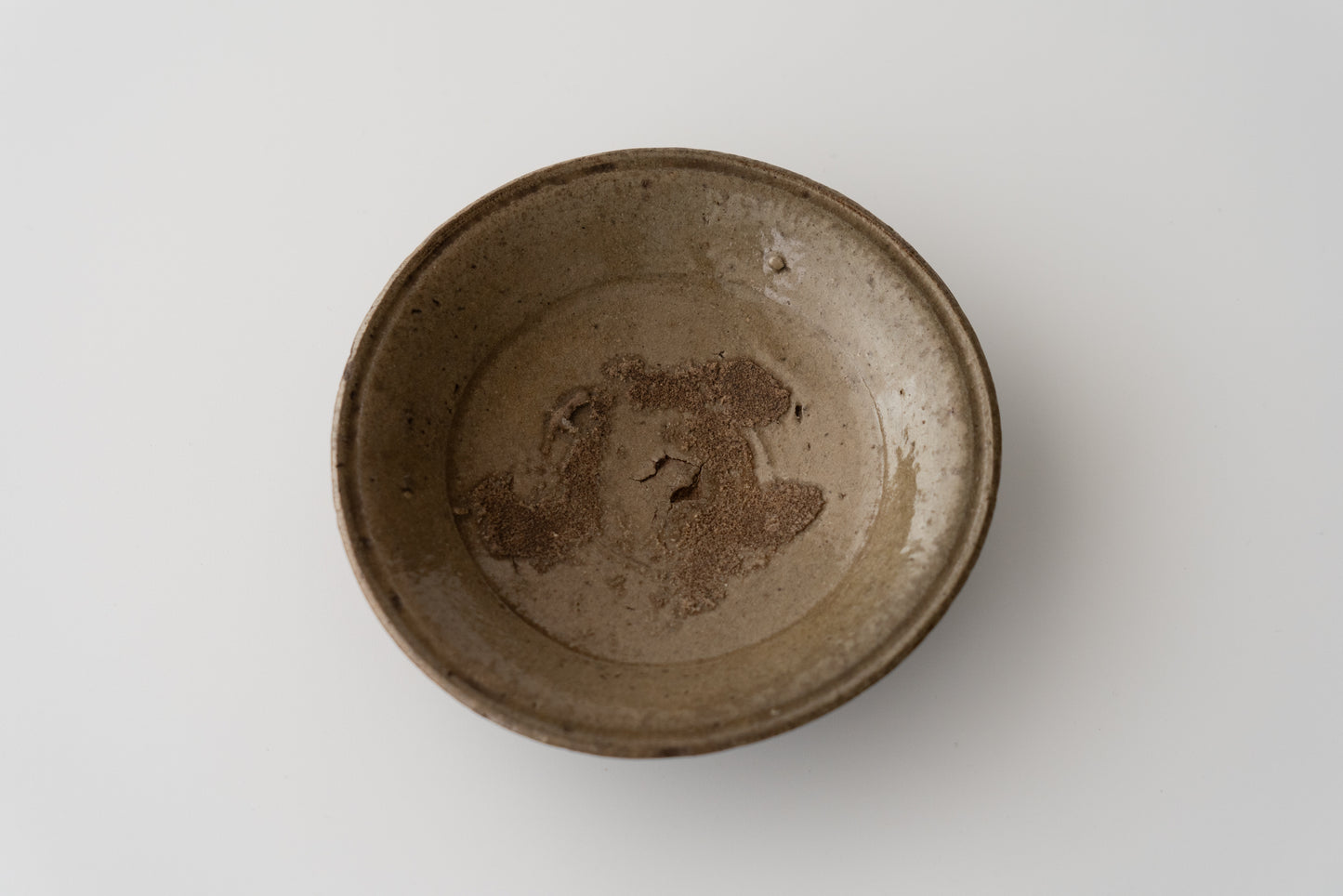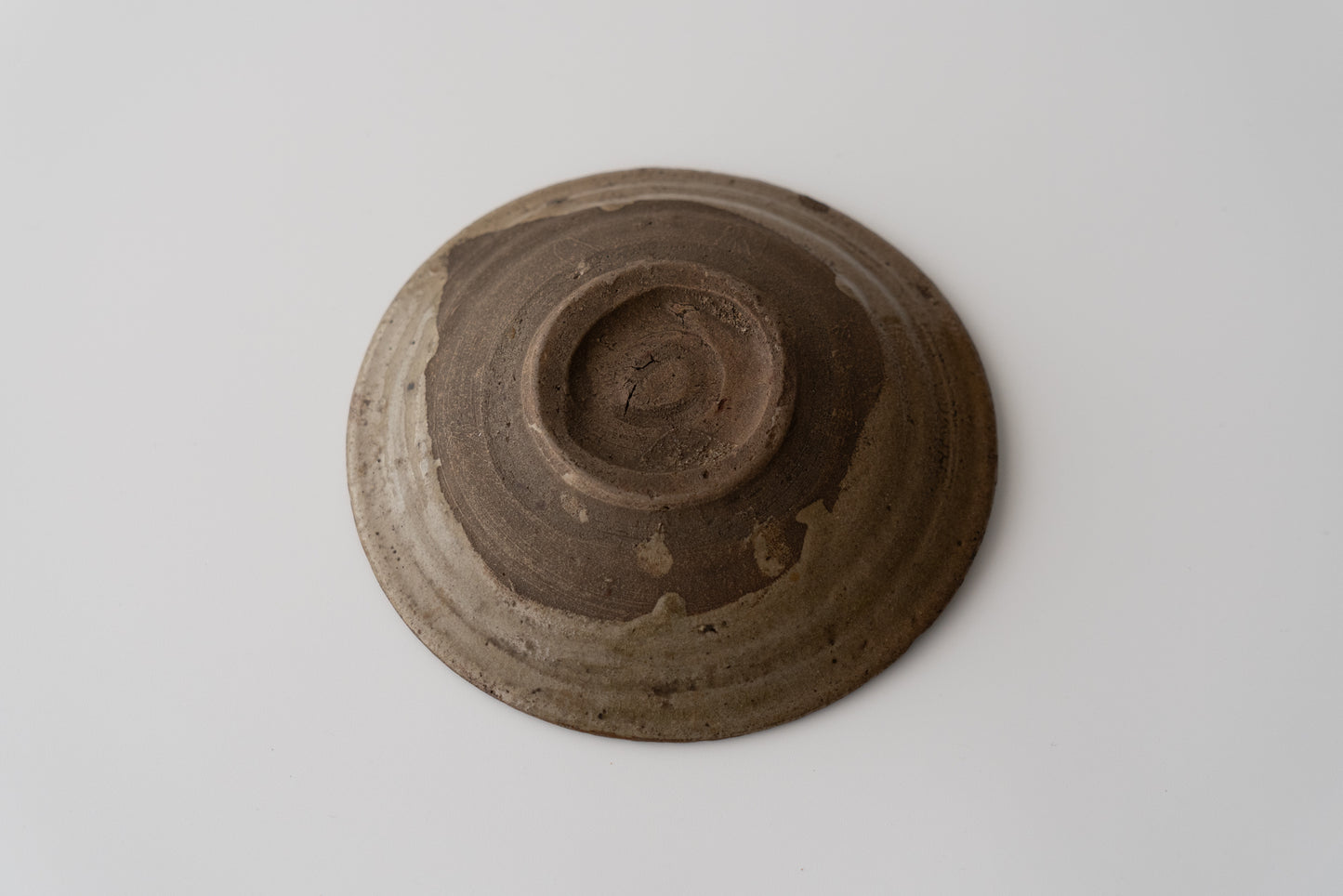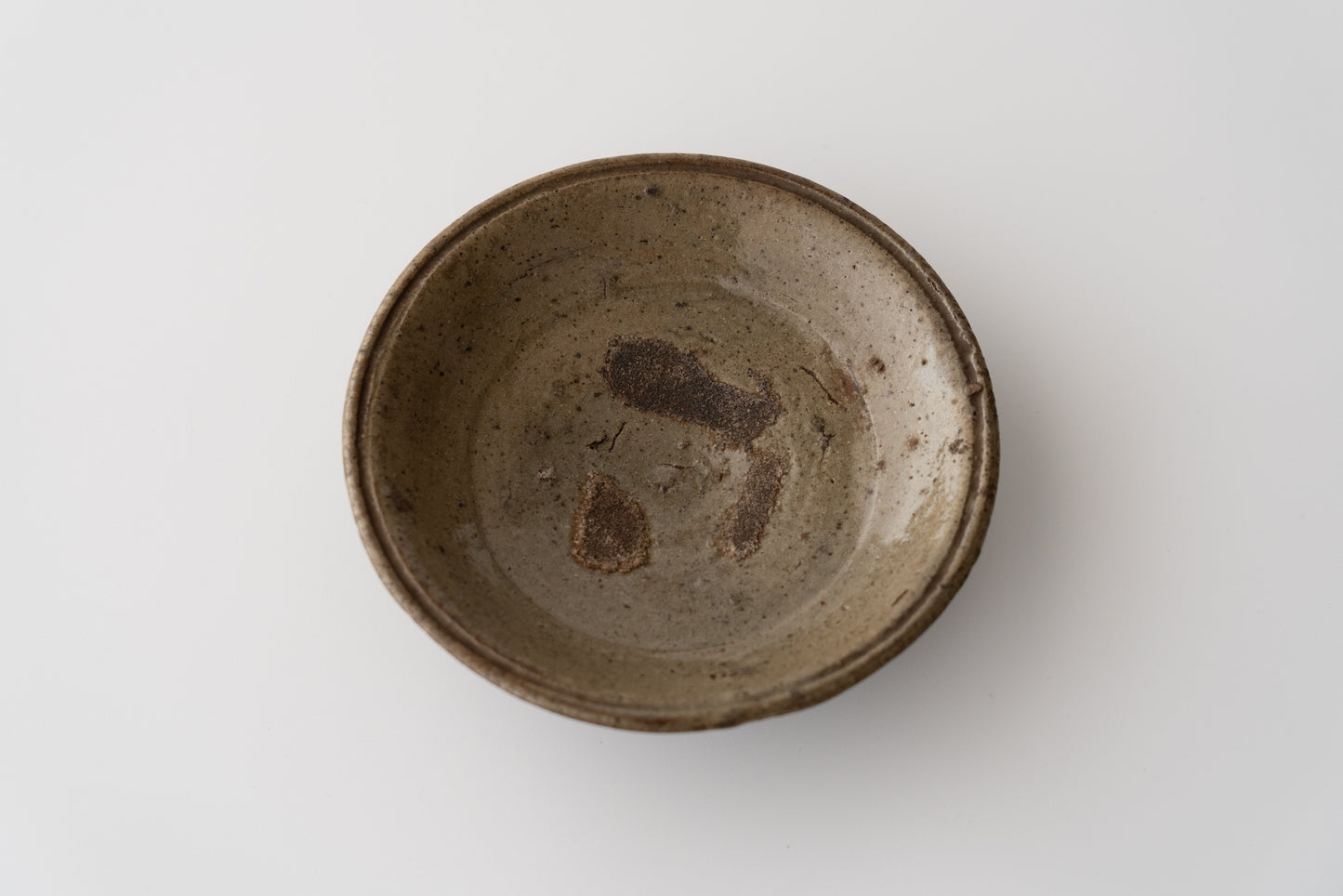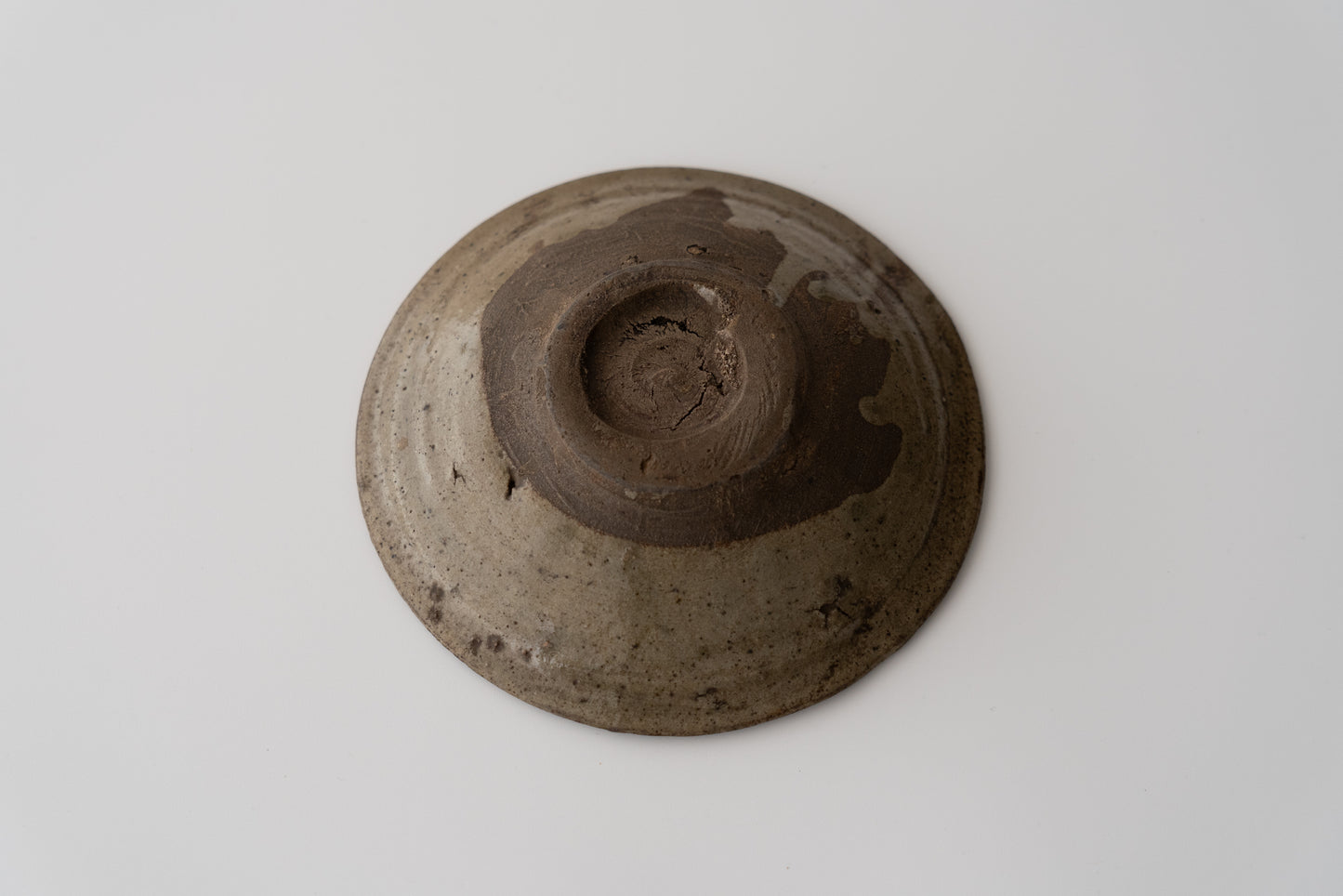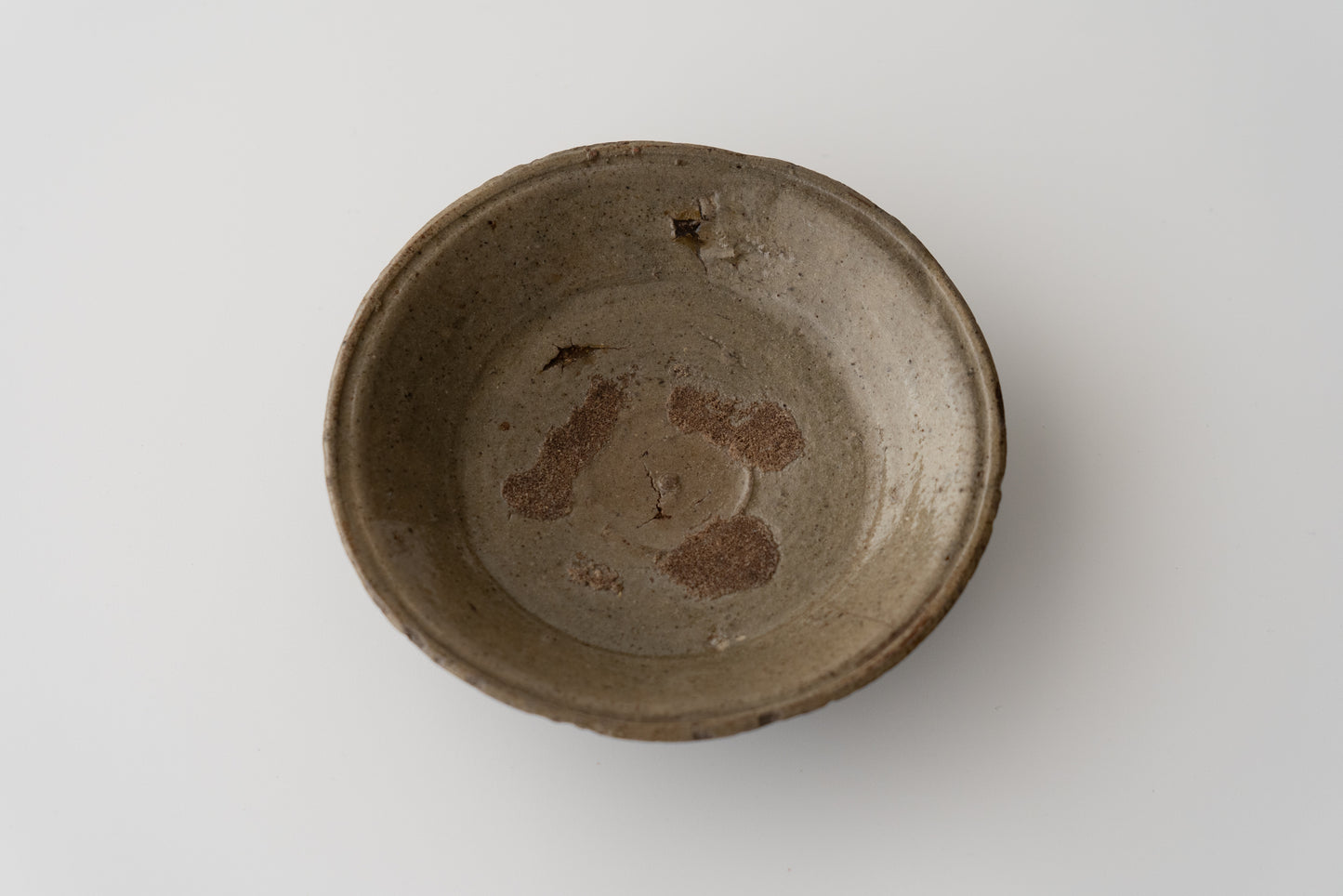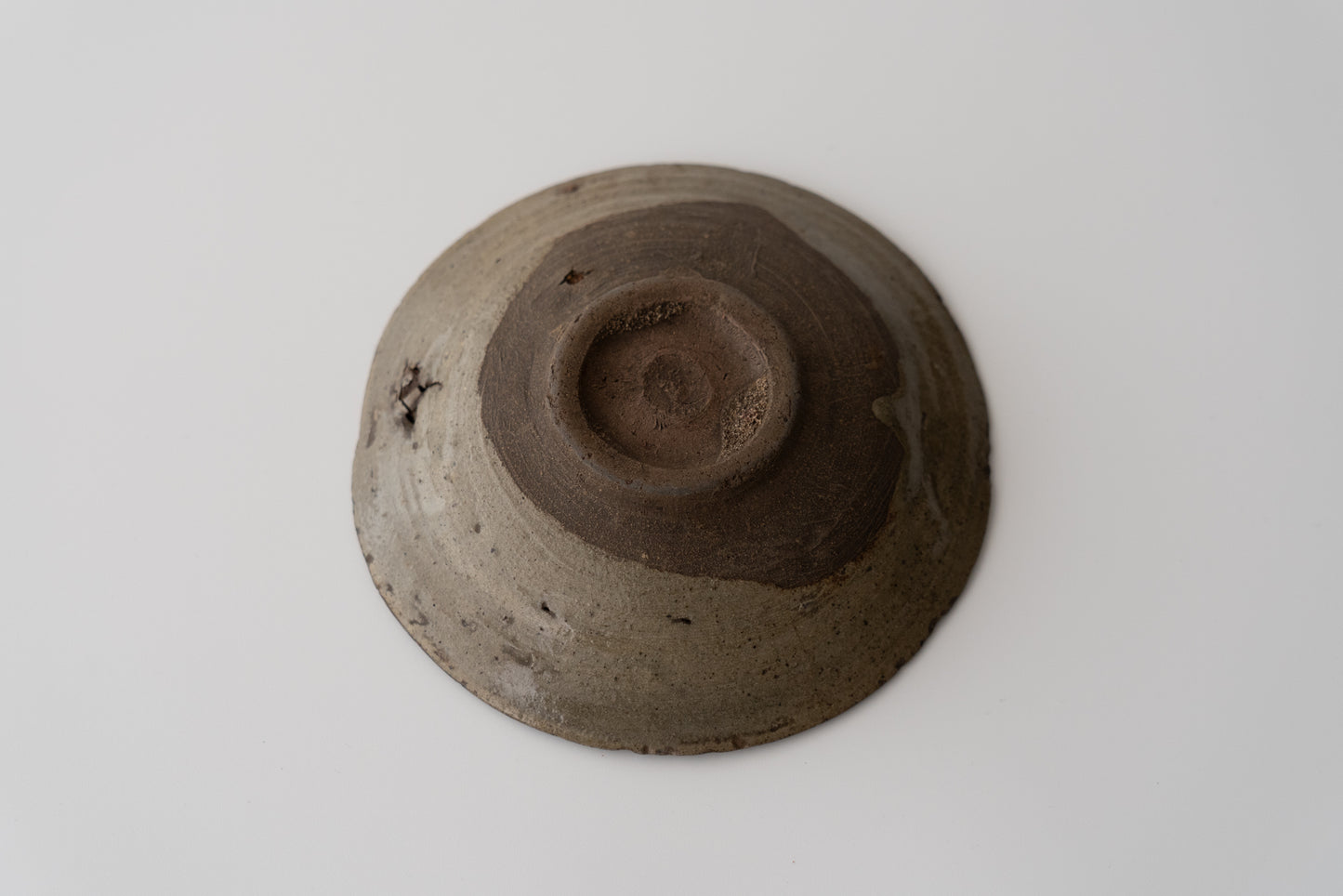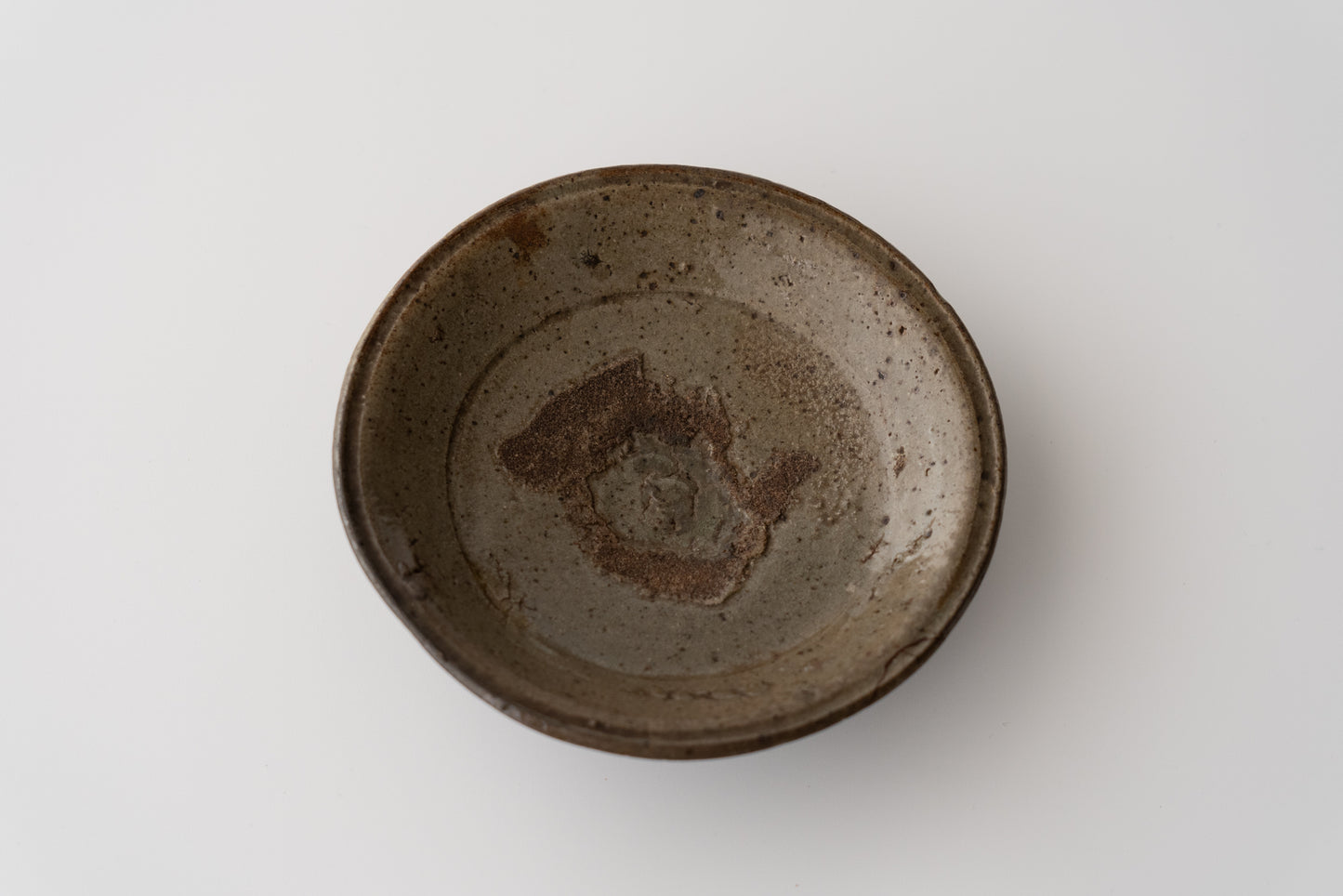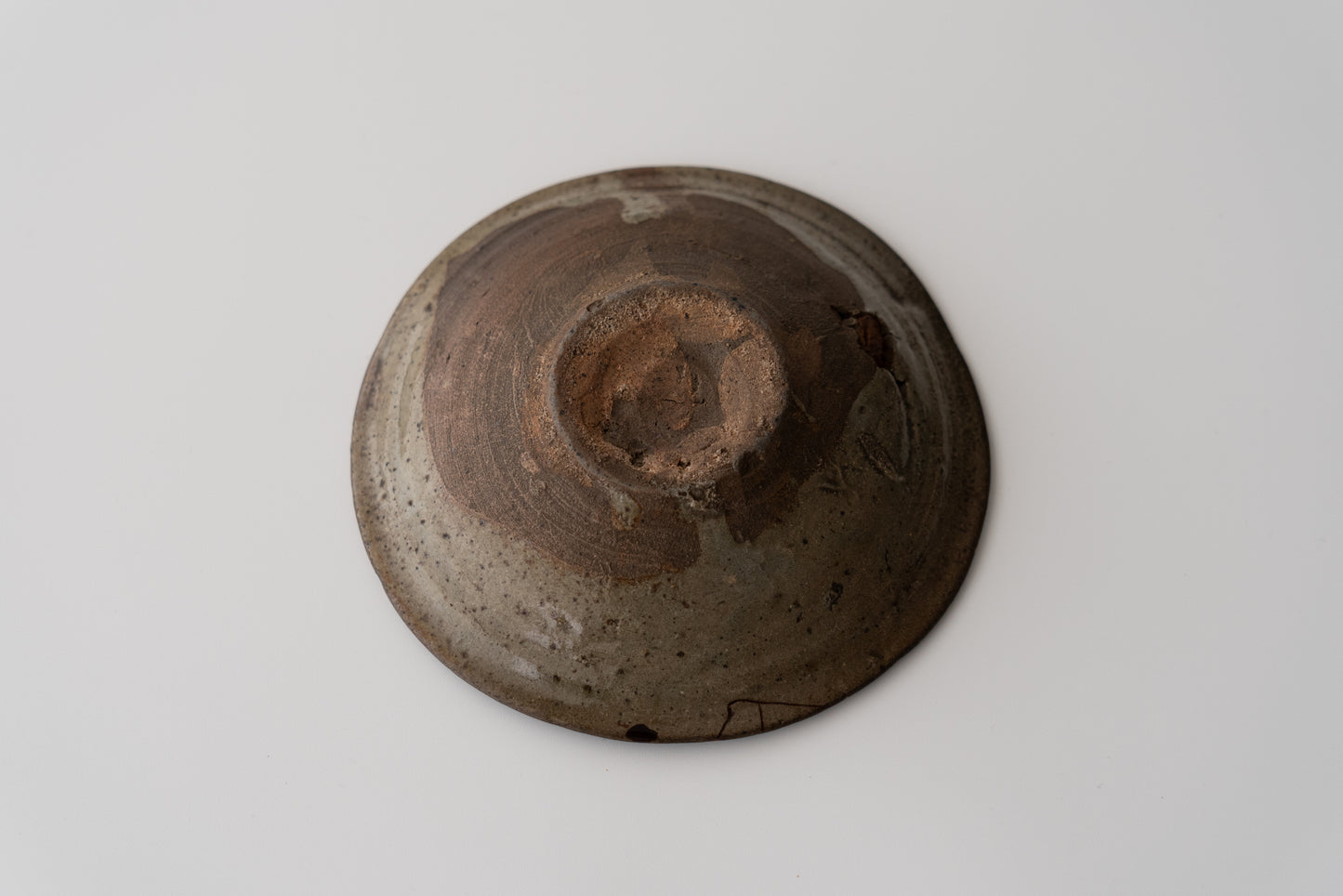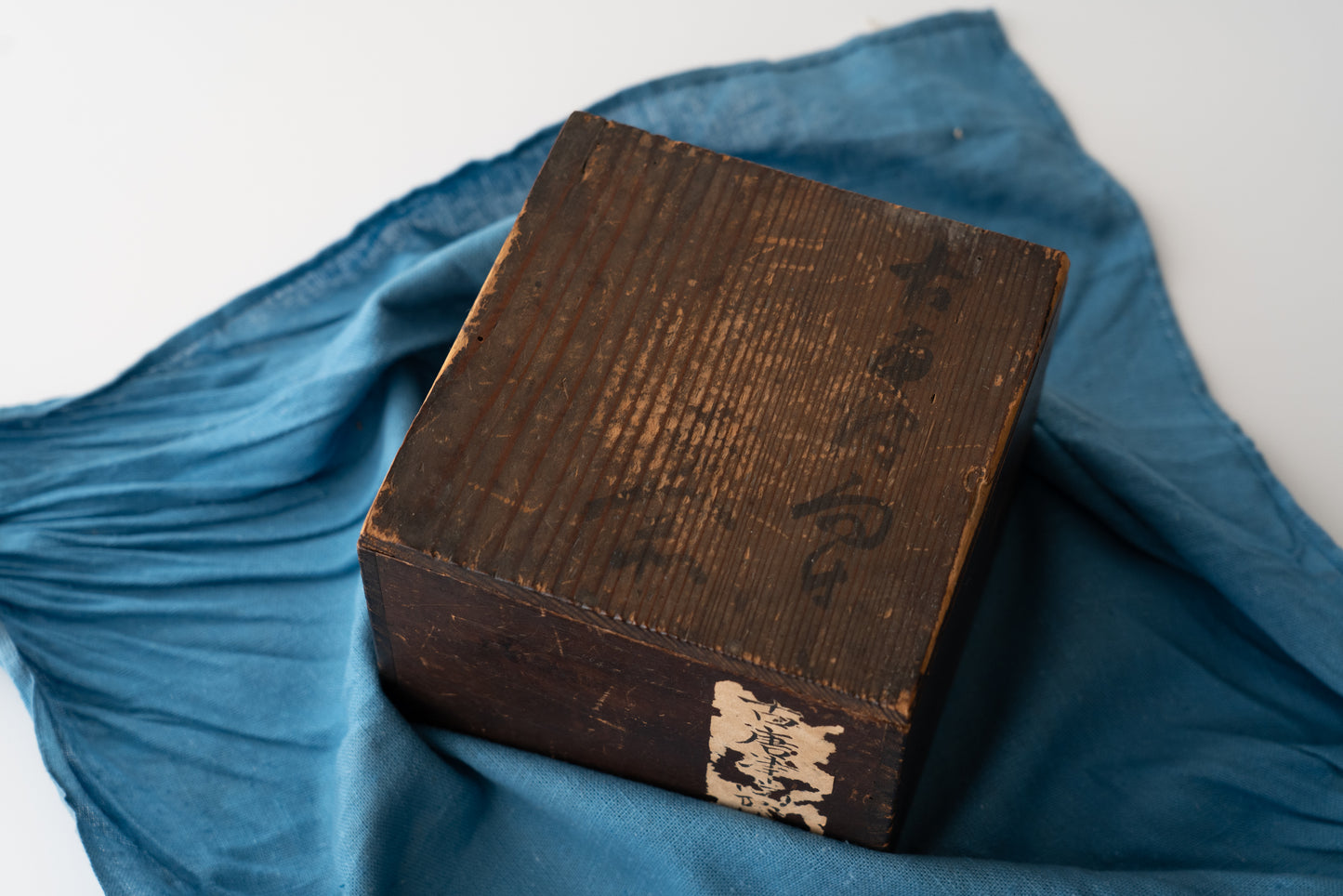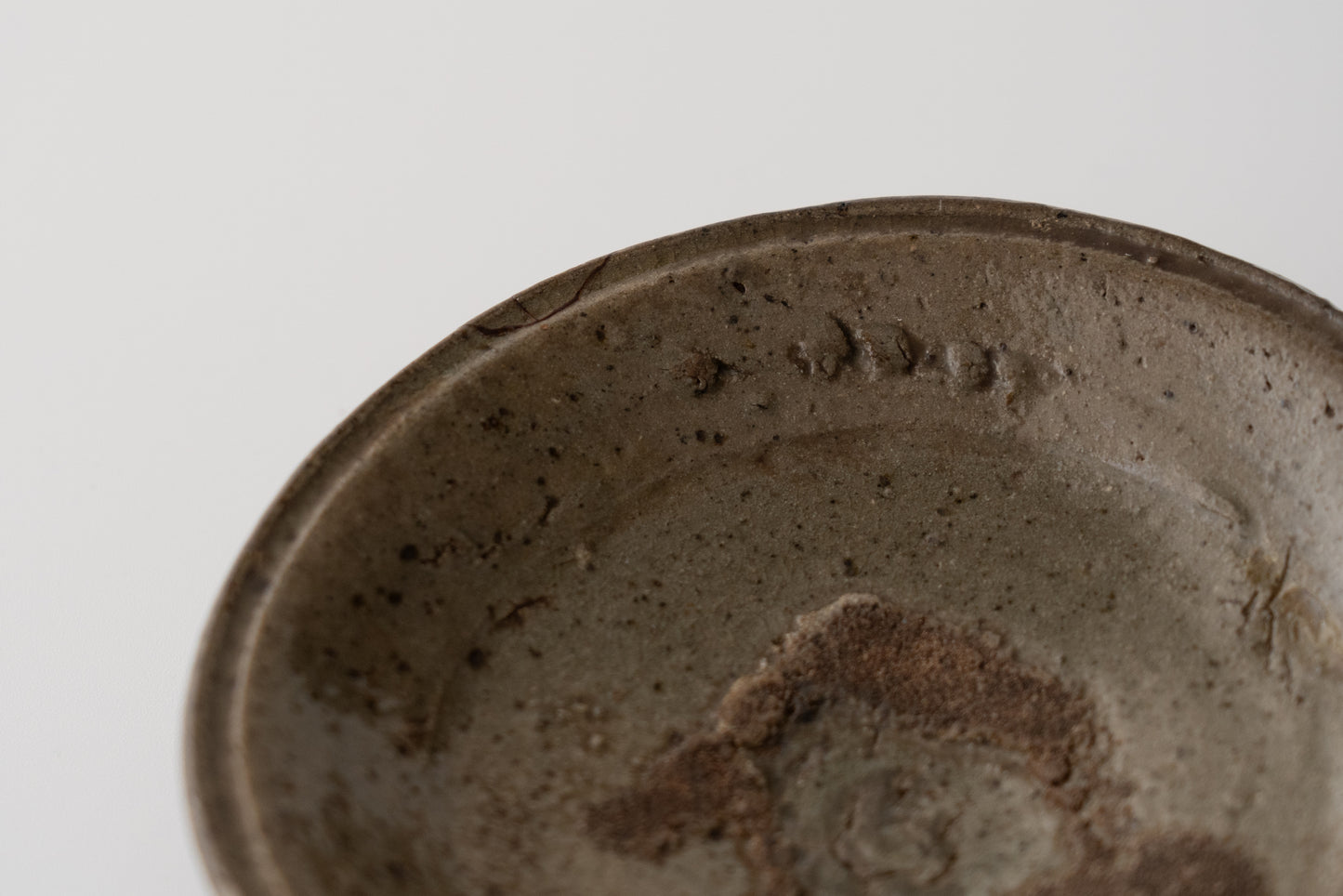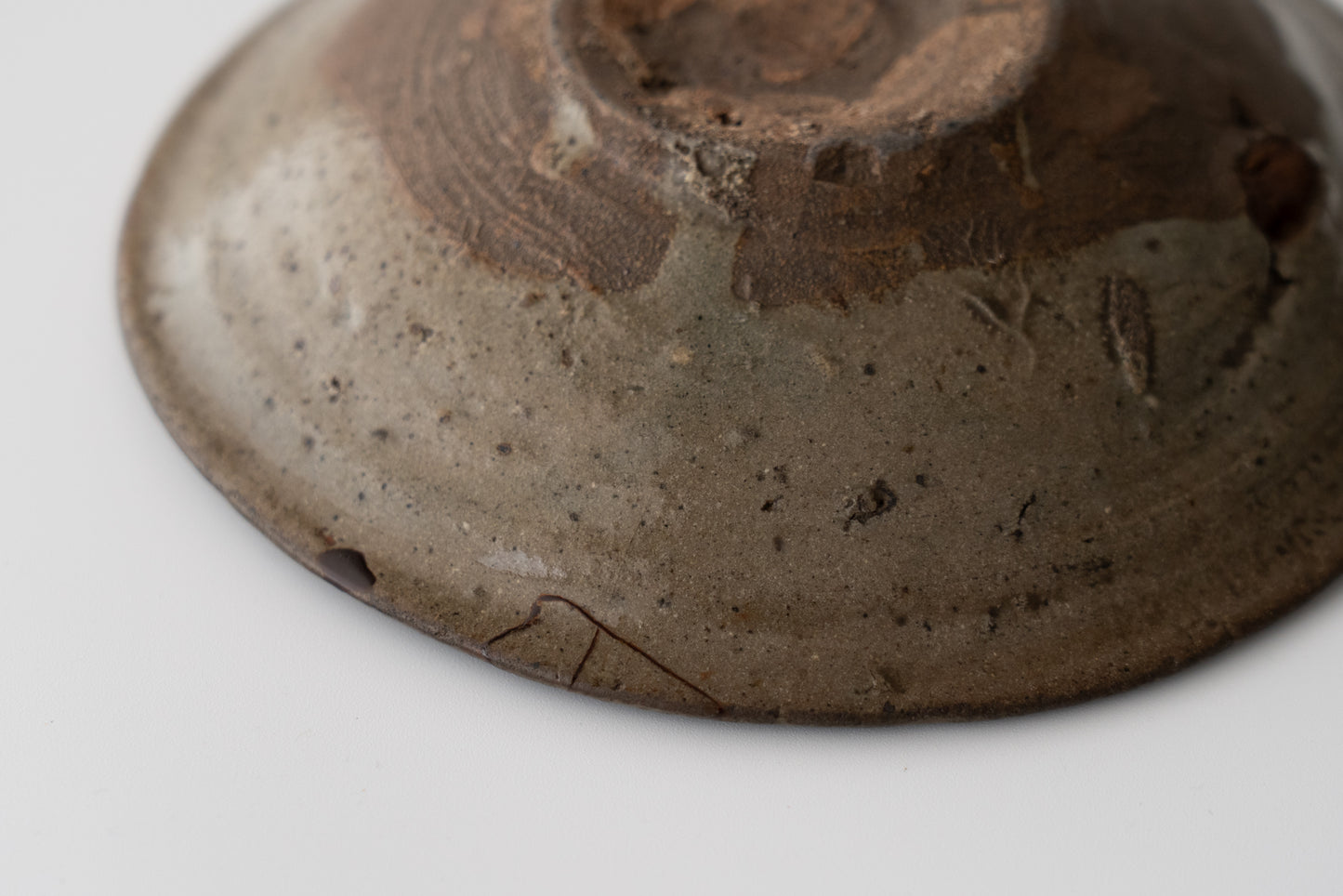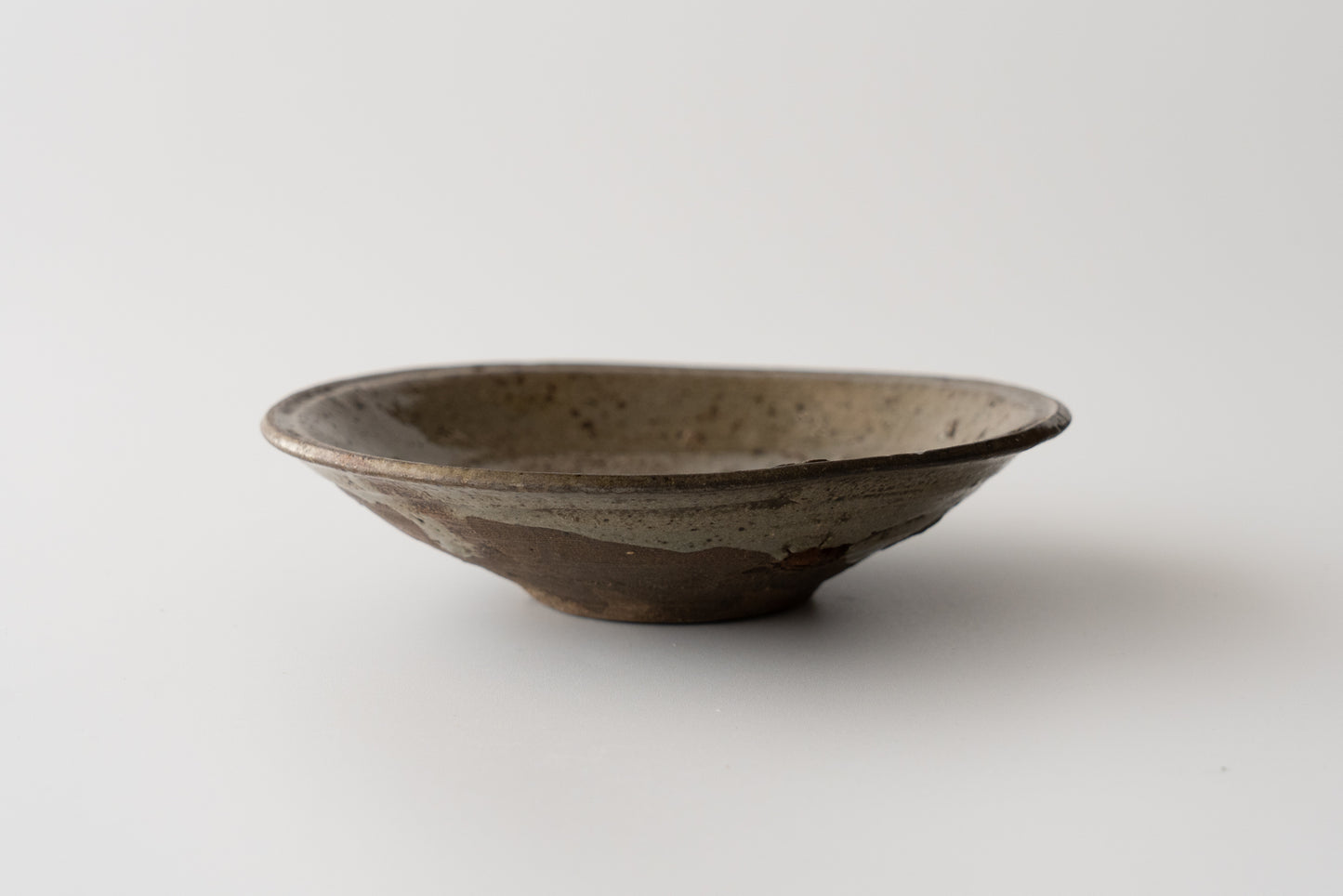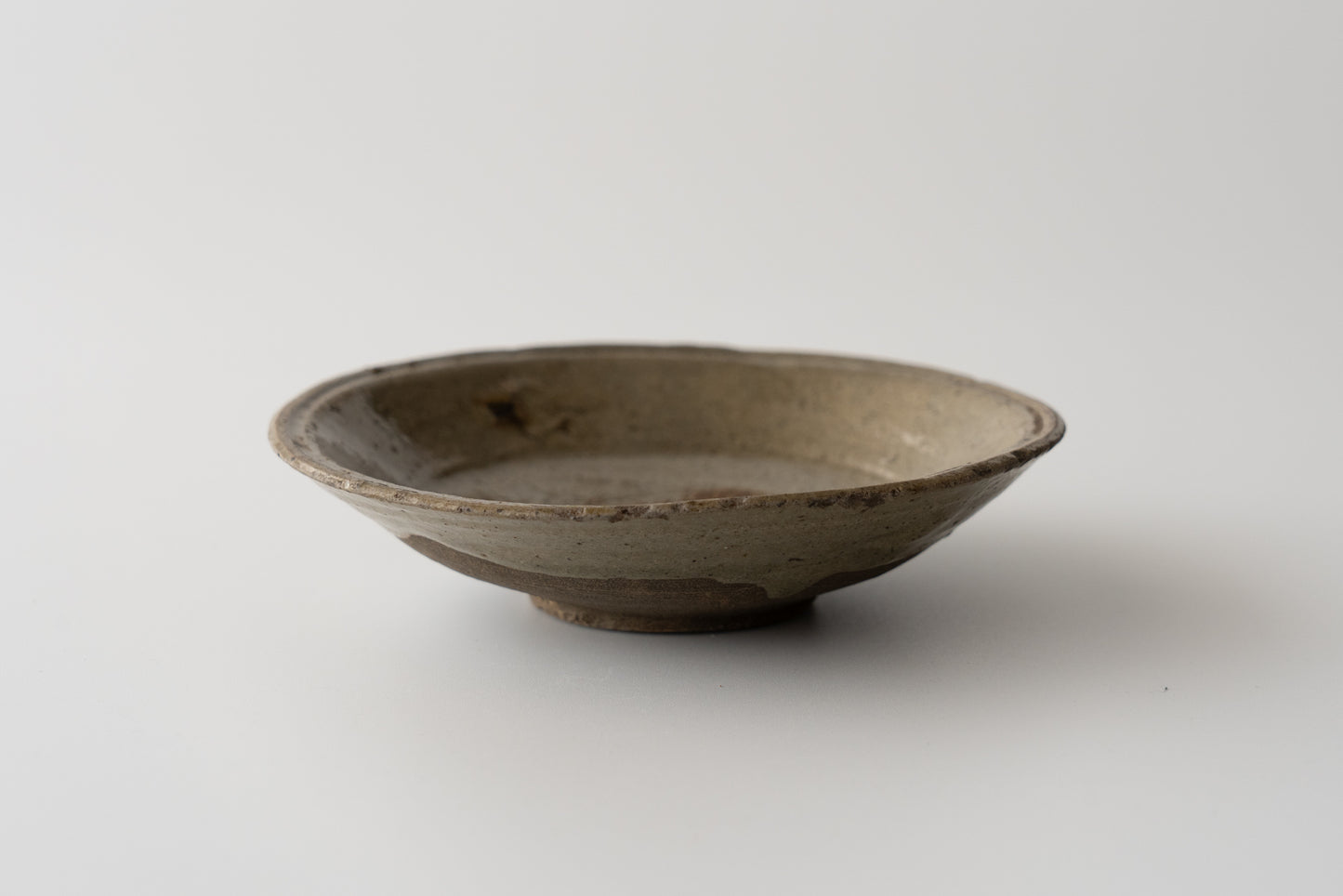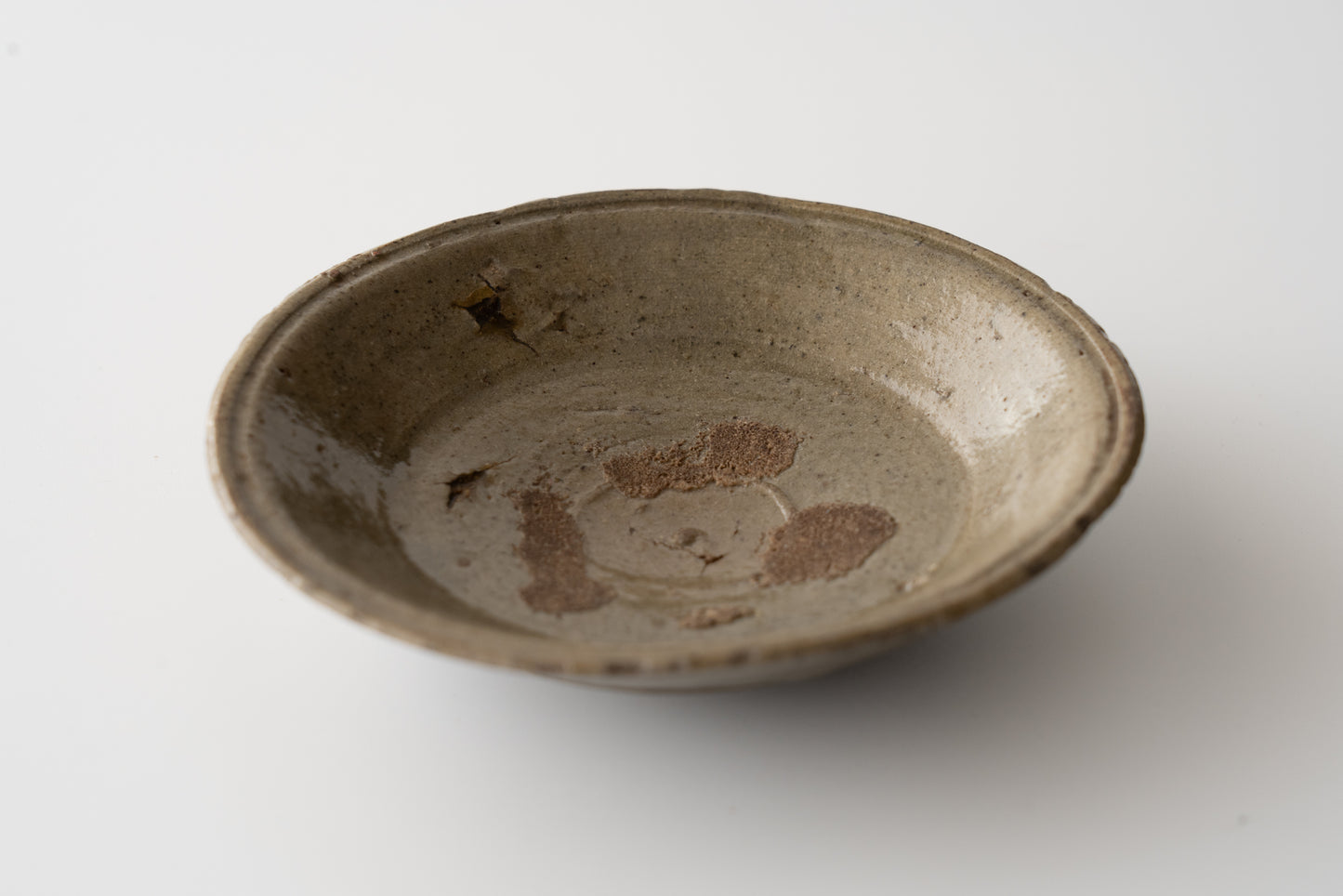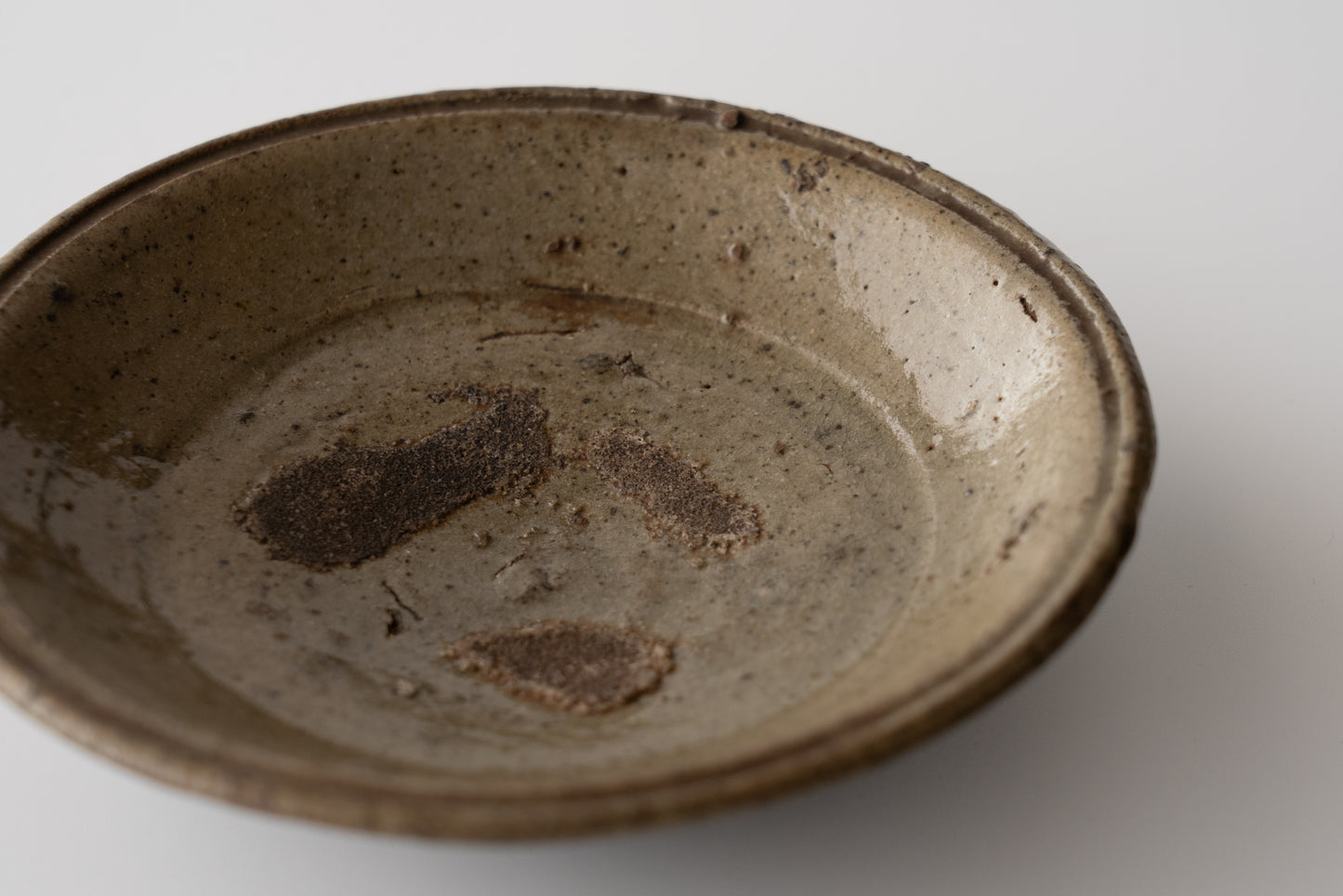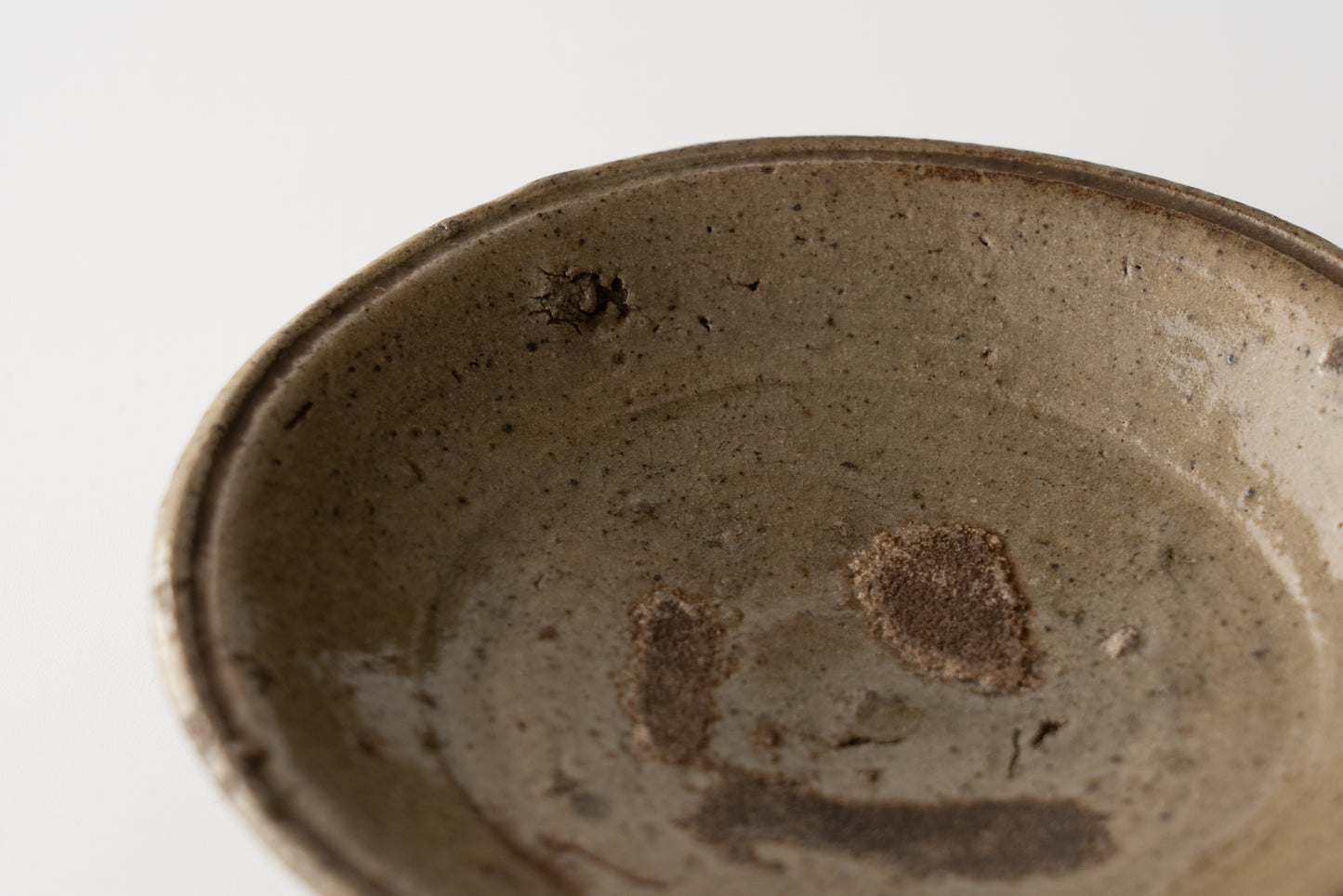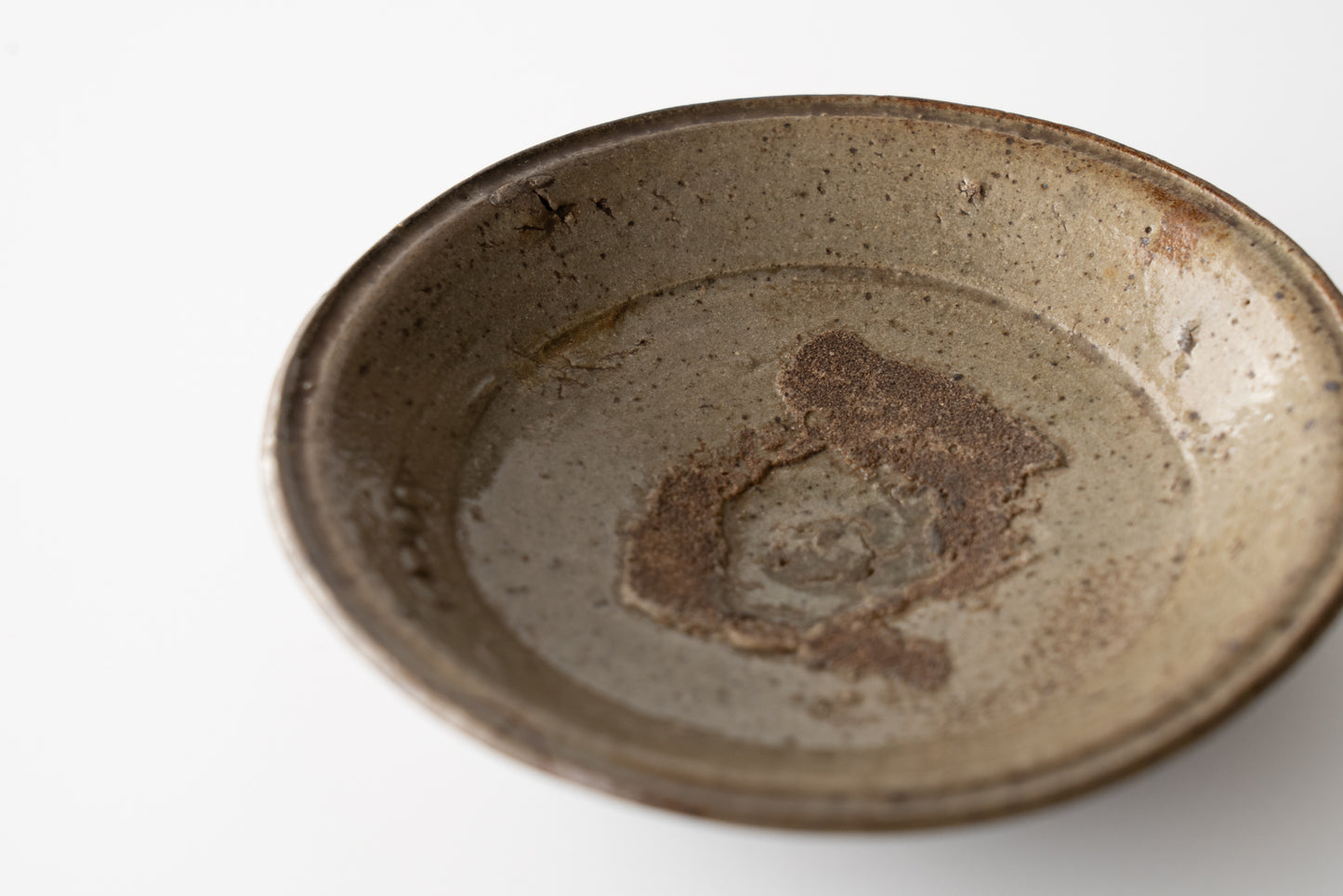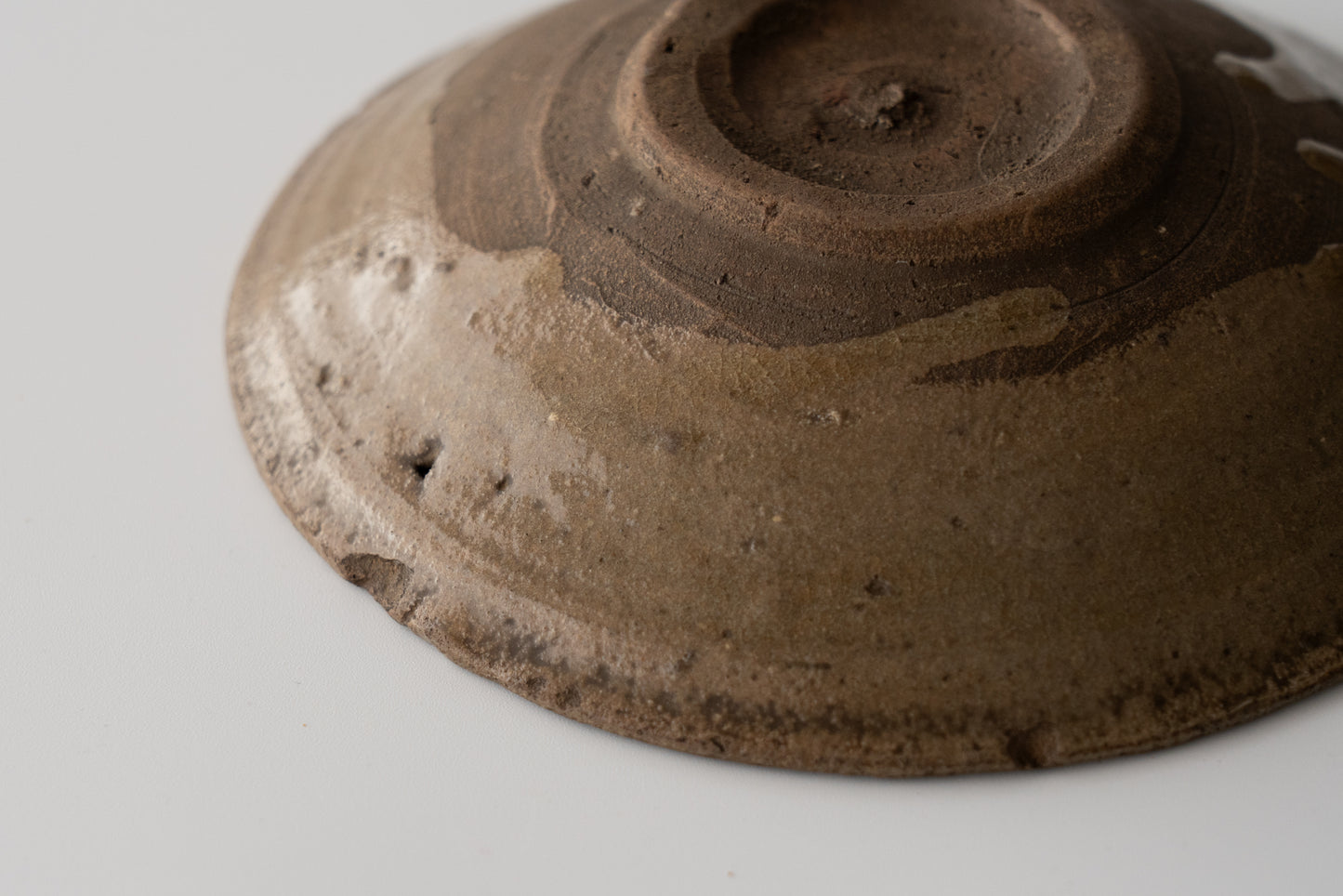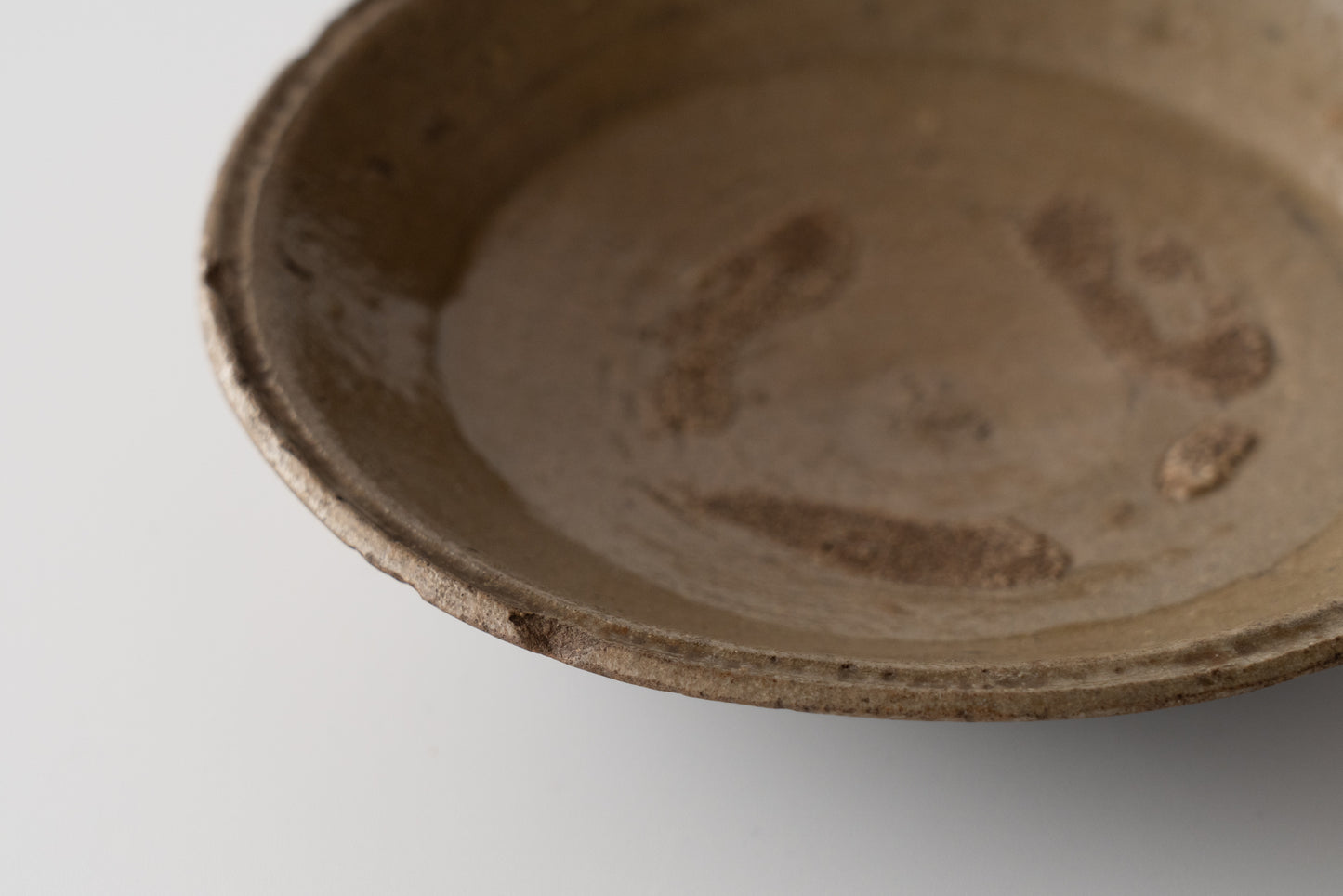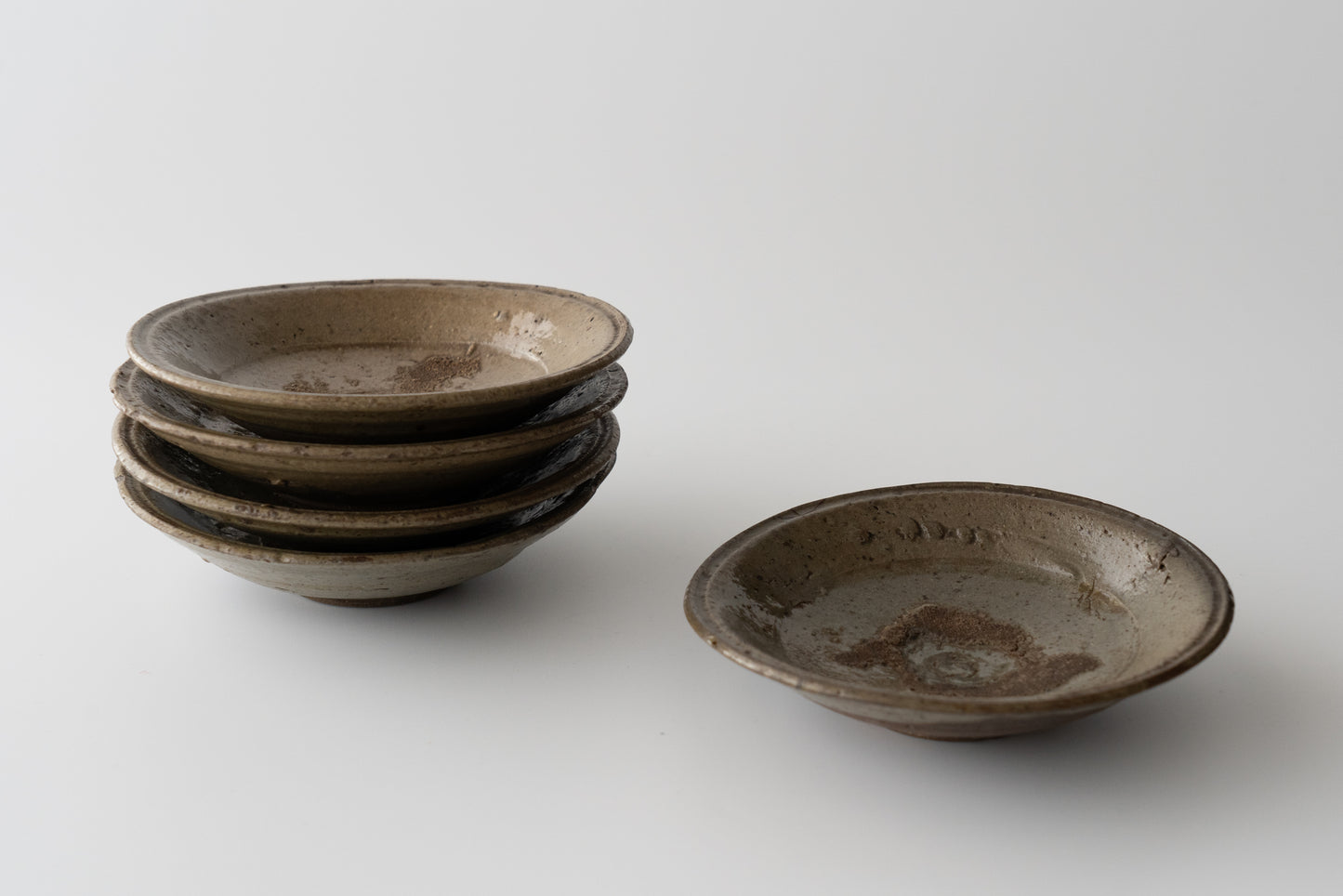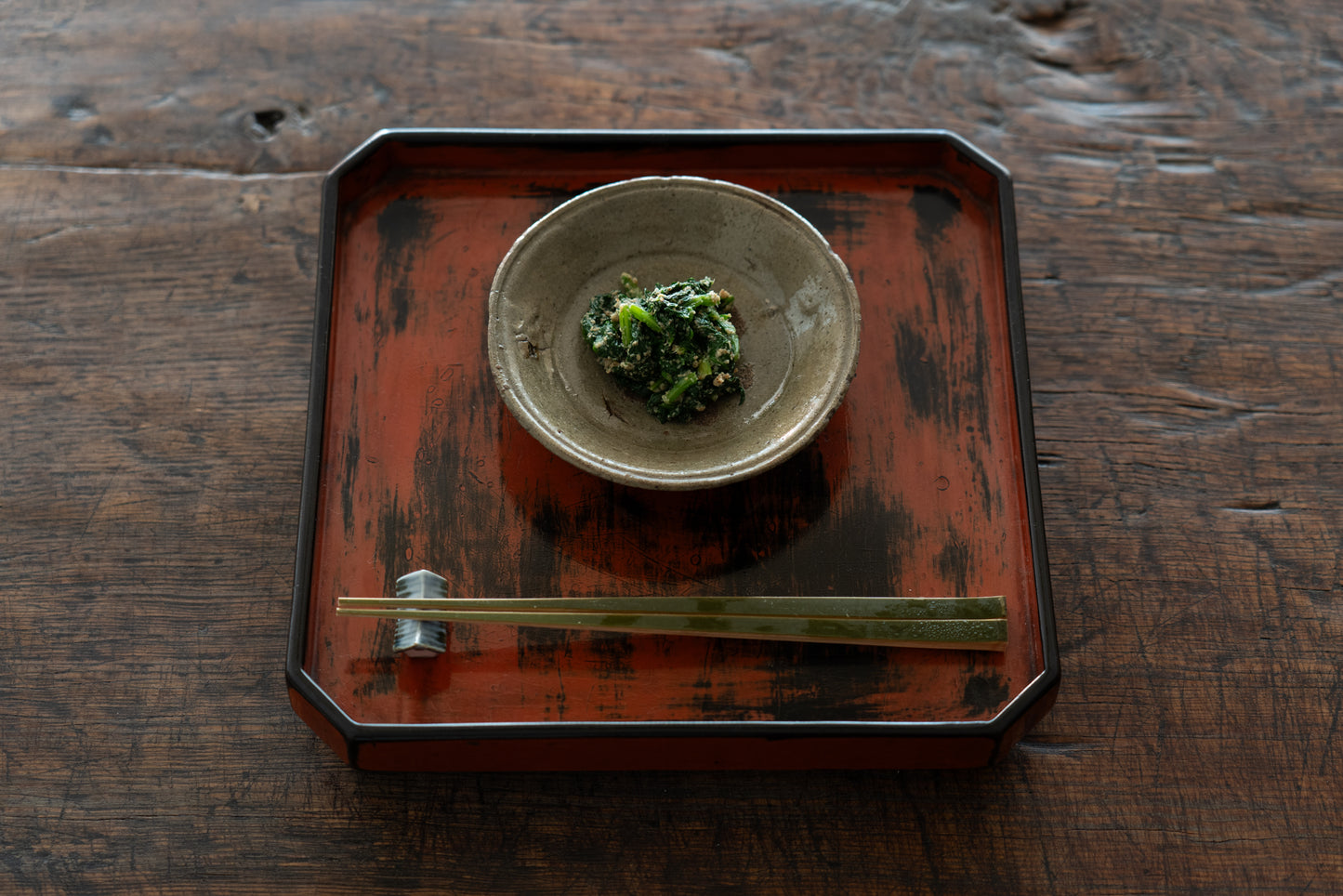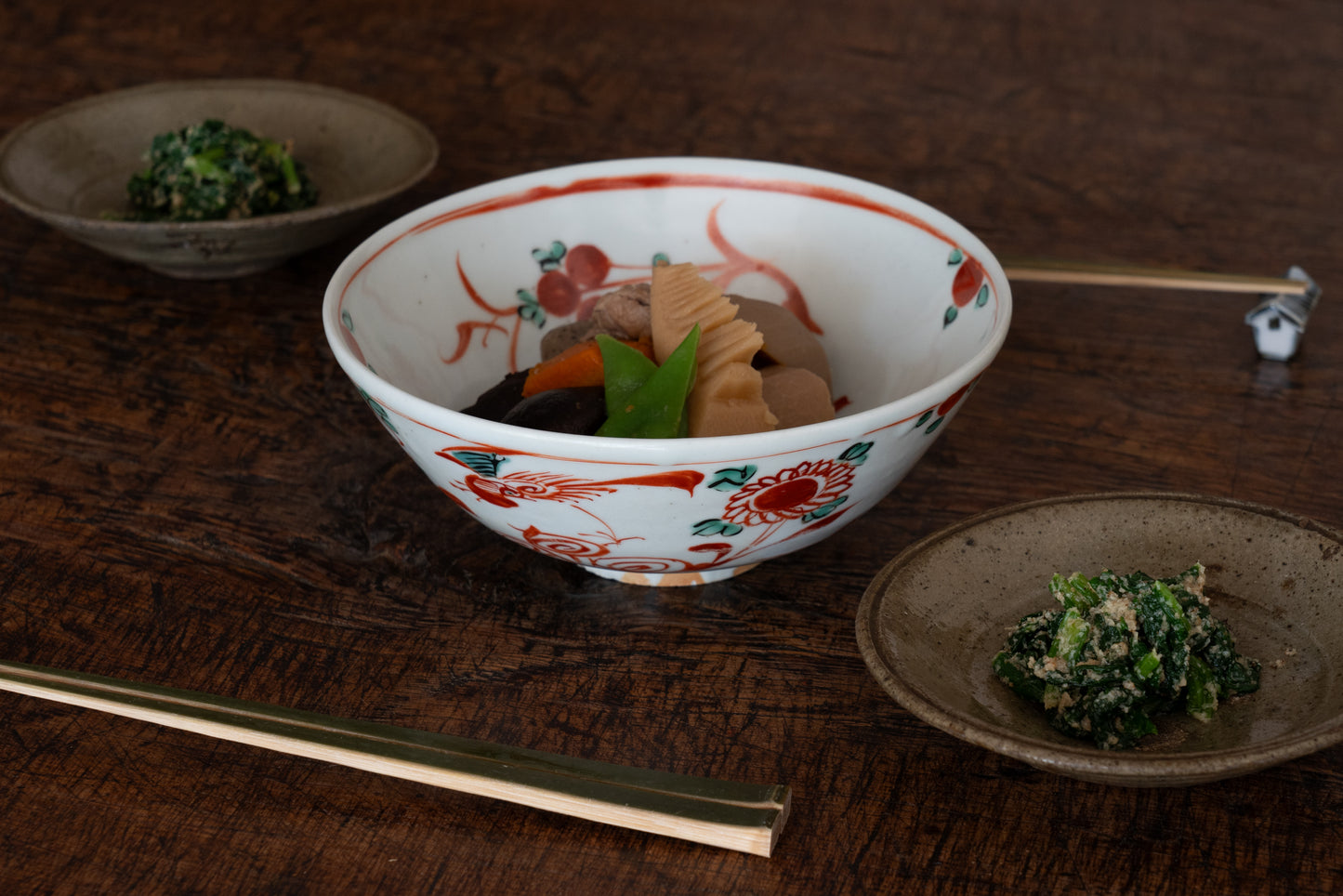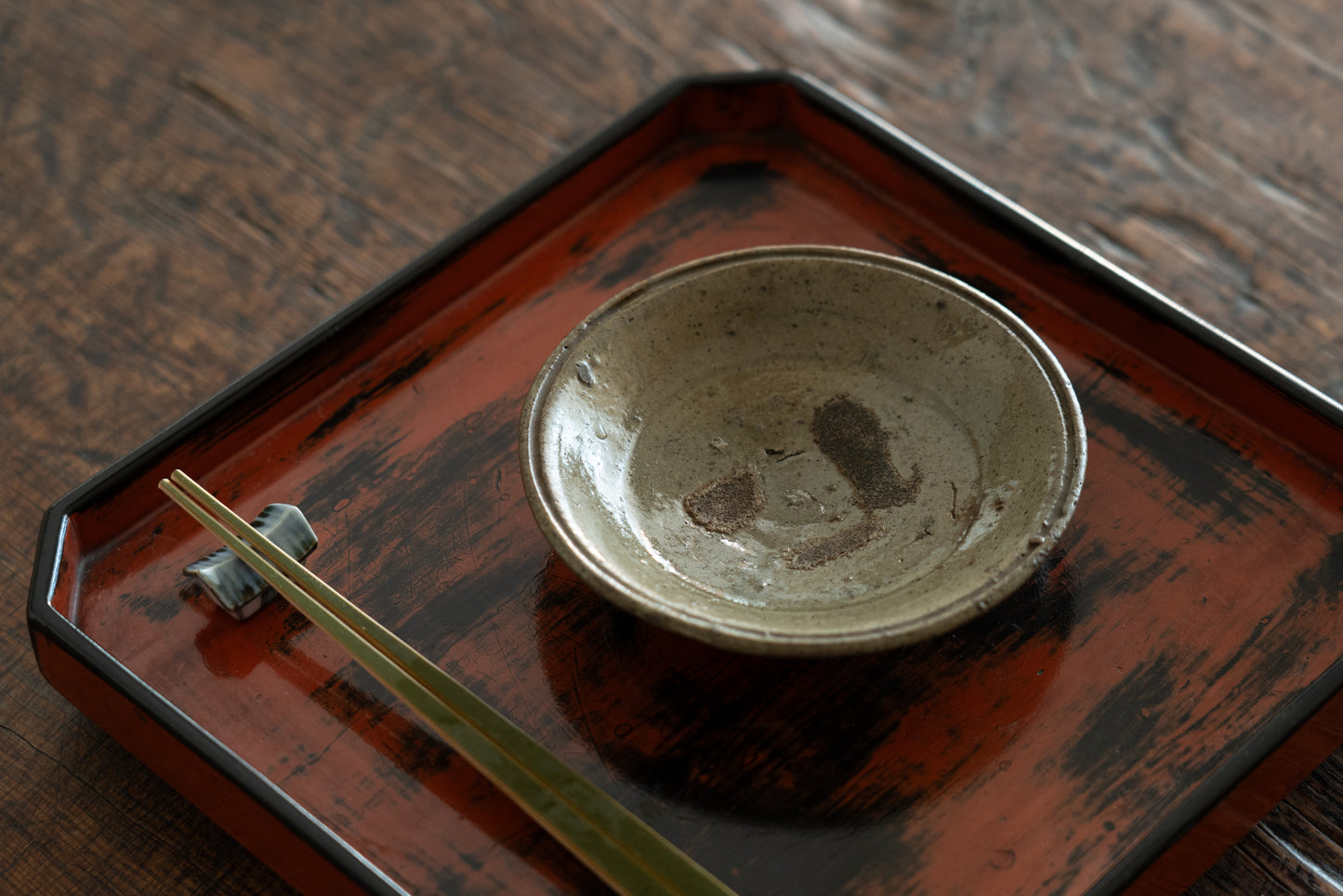A set of five plates, karatsu ware
- Region/Era Japan / Late Momoyama period to early Edo period
- Size H3.2×W13.2×13.2cm
- Condition Each piece has a 2cm wide repair (lacquer repair)
- Accessory paulownia box
- No. 42nk-117
We were able to purchase individual plates in excellent condition that allow you to experience the charm of old Karatsu.
The box, which appears to have been custom-made in ancient times, has the words "古唐津向付(Kokaratsu Mukozuke)" written in ink on it, suggesting that it has been handed down with great care.

Plain Karatsu plates like this one were luxury items at the time, but they were used as everyday utensils. Also, since many of these are excavated items, cracks and scratches are common. It is not easy to find five plates that are in good condition and harmonize together as a set. You can sometimes see end plates (pieces separated from a set of several) in the market, but I was delighted to find a set of five plates made like this.

There are some rounded chips here and there that seem to date back to the old days or even from the time of manufacture, but only one piece has been repaired. A 2cm crack on the edge has been repaired with lacquer. The calm lacquer repair, which is not too conspicuous, leaves a good impression.

In the center of each piece, you can see traces of sand-grain stacking, a technique that originated on the Korean Peninsula. These corners are also nicely rounded, with no unpleasant snags. All five pieces retain the glossy luster of the glaze, with stone chips and iron spots visible here and there, allowing you to enjoy the rustic scenery unique to Old Karatsu.
The back side is glazed leaving only the raised foot. The rough earthen texture and the flow of the glaze are both attractive and rough.


Plates with eye marks like this one are thought to have been produced from the end of the 16th century to the beginning of the 17th century. Similarly, this piece is thought to have been produced sometime between the end of the Momoyama period and the beginning of the Edo period.
With a diameter of just over 13cm, it is just the right size to serve as an individual plate on a tray, and also a good size for portioning out sweets.
Simply prepared wild and green vegetables will add a subtle, nutritious flavor, or you can serve a small amount of fresh sashimi.
It is a vessel that allows you to imagine a variety of scenes.
To pick up and see the actual item in the gallery.
Reservation